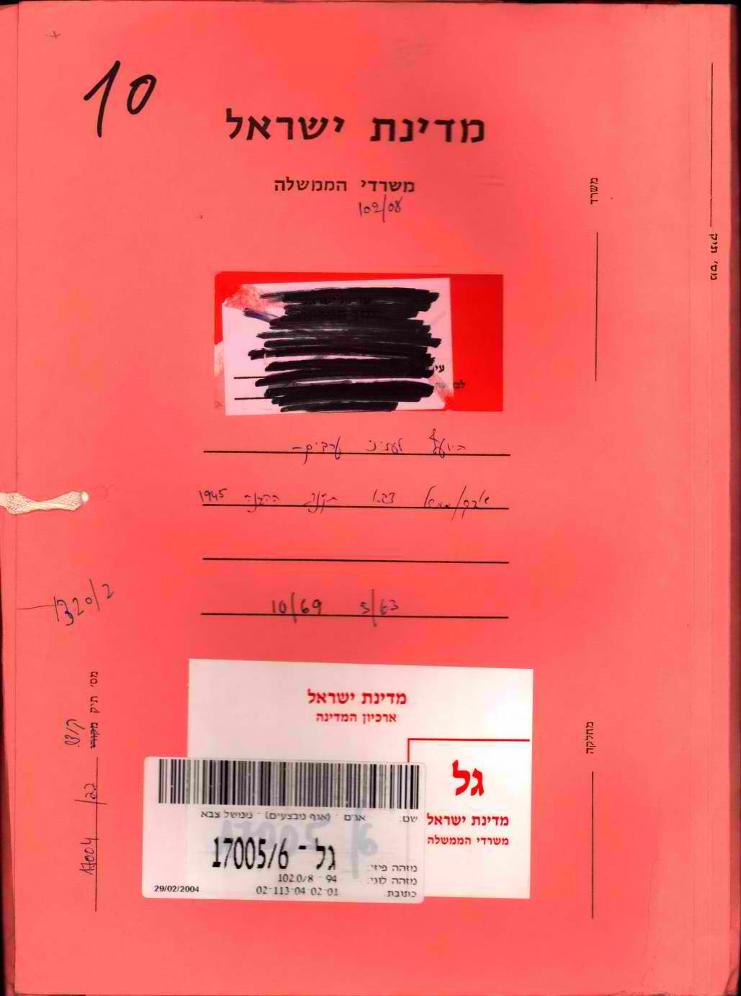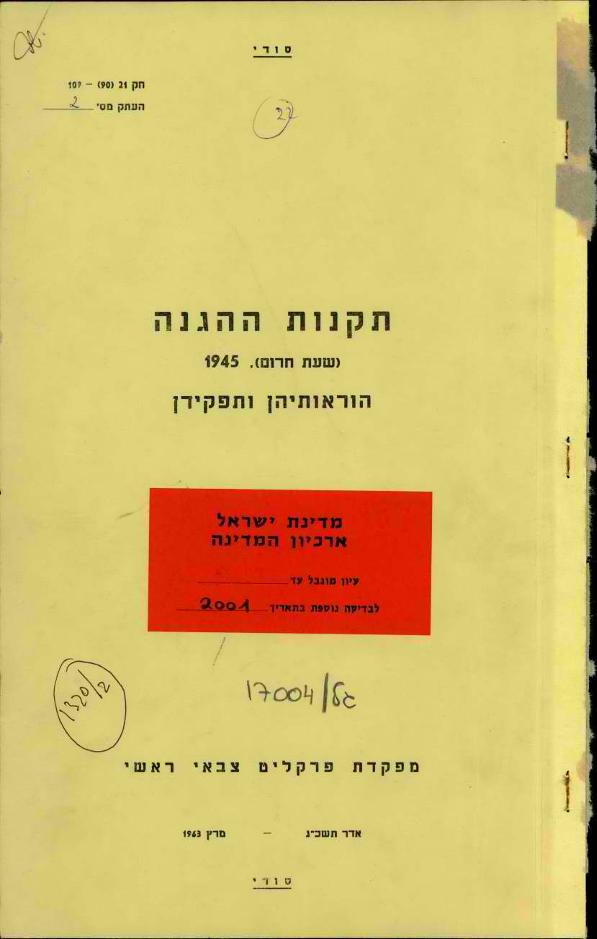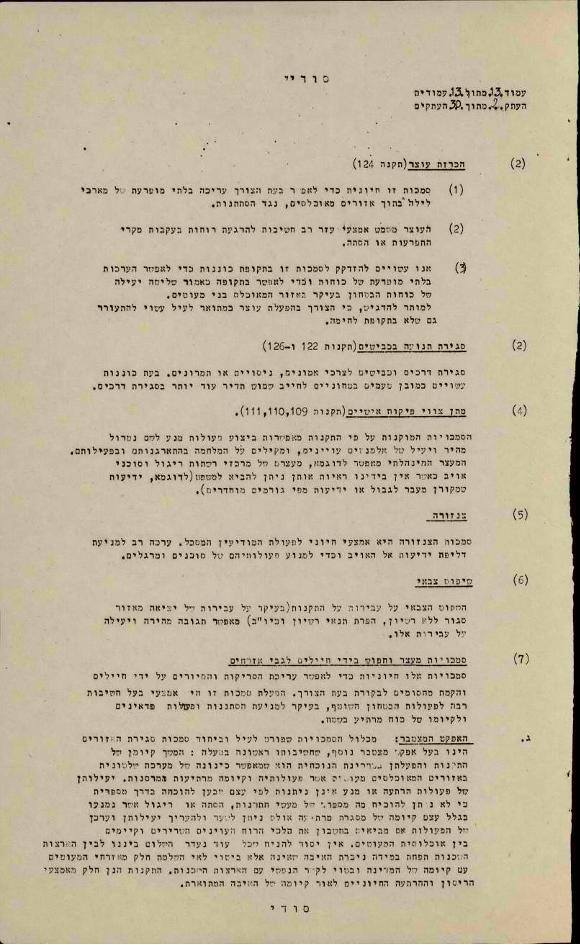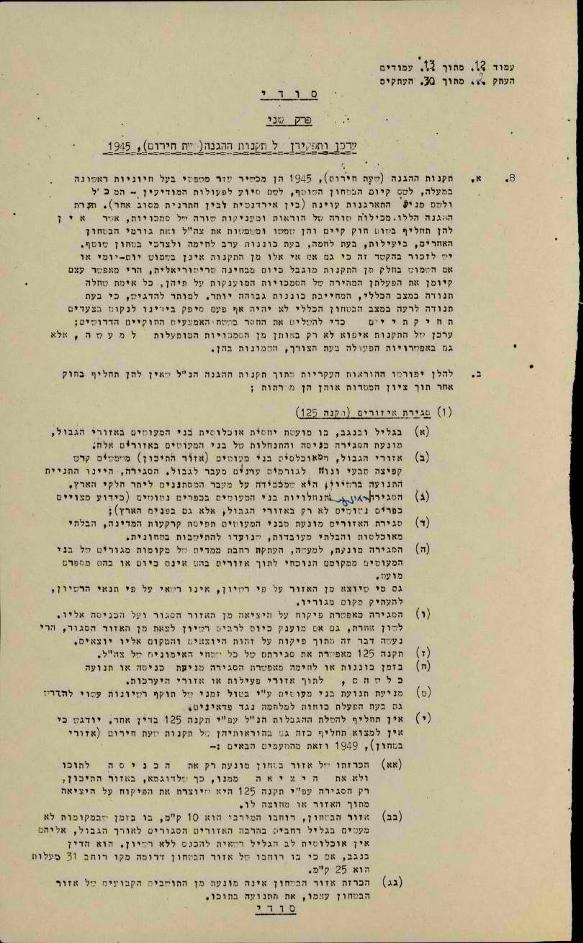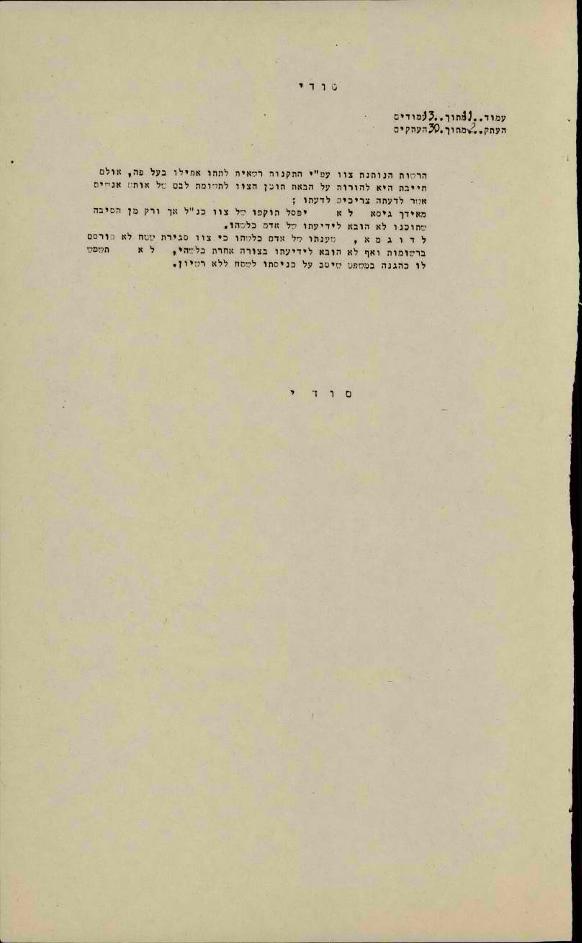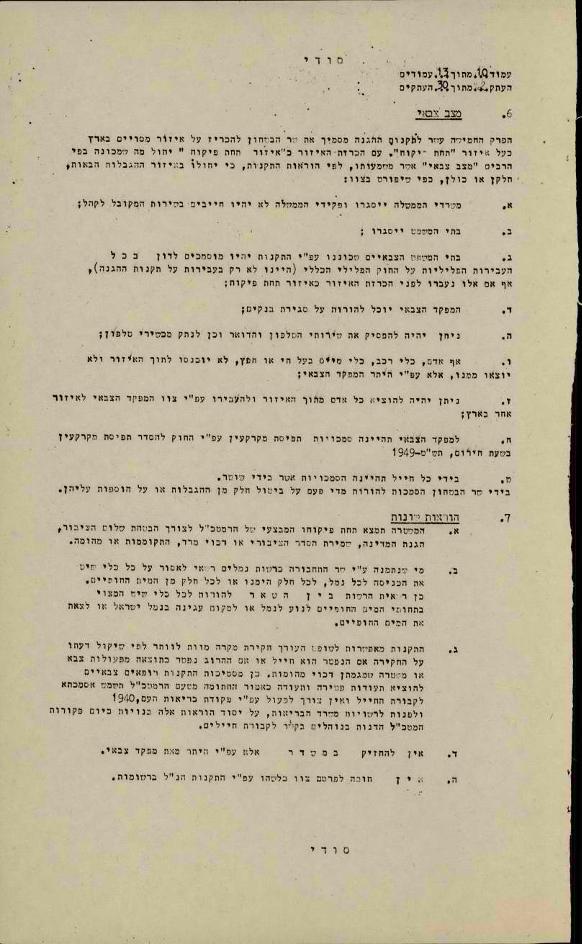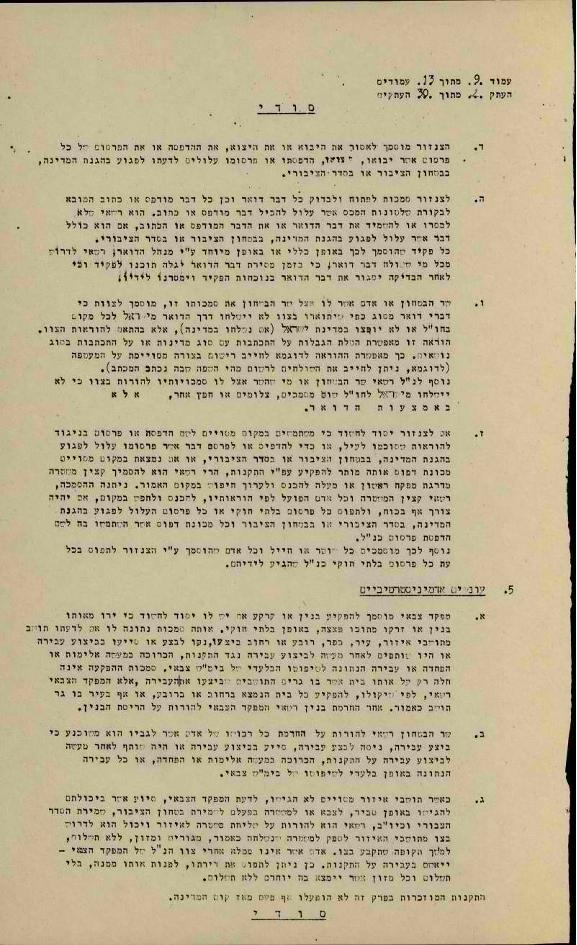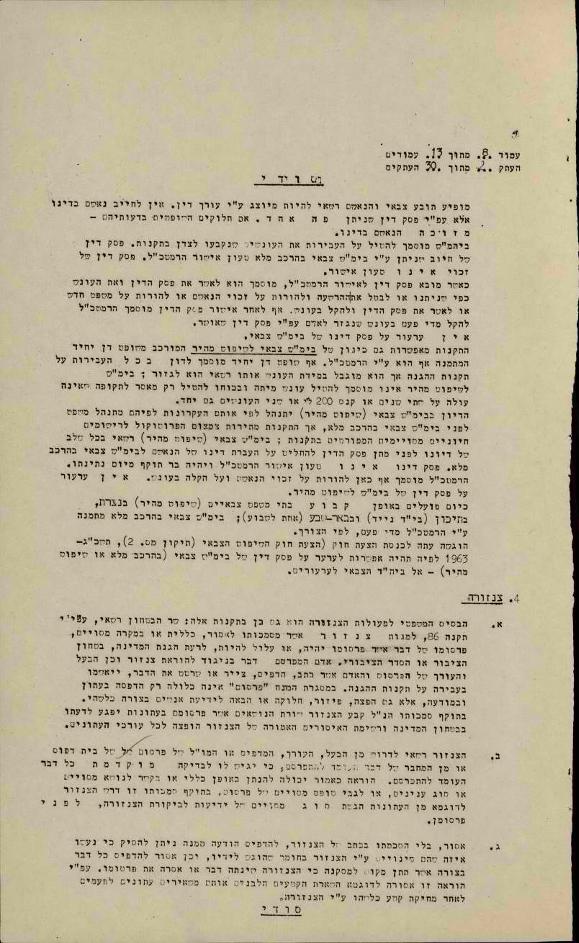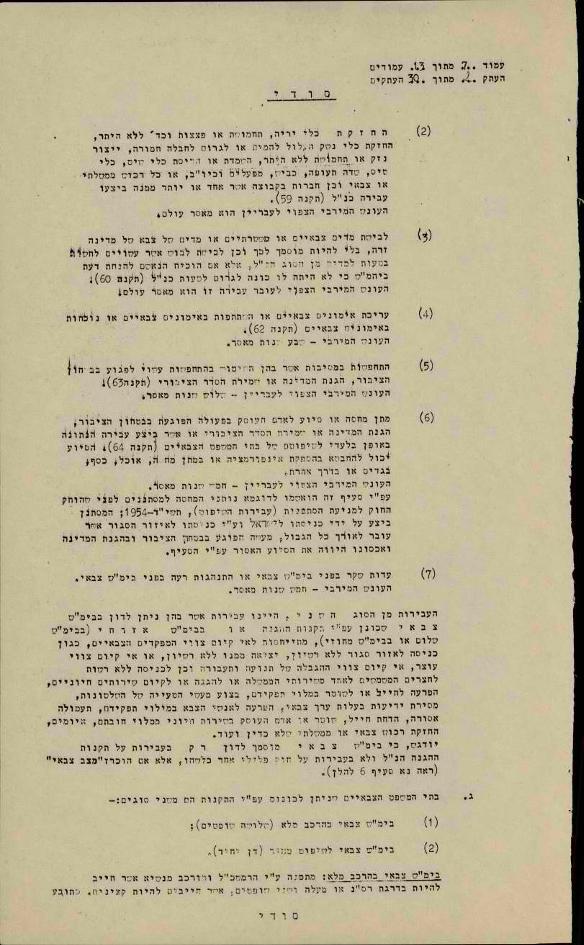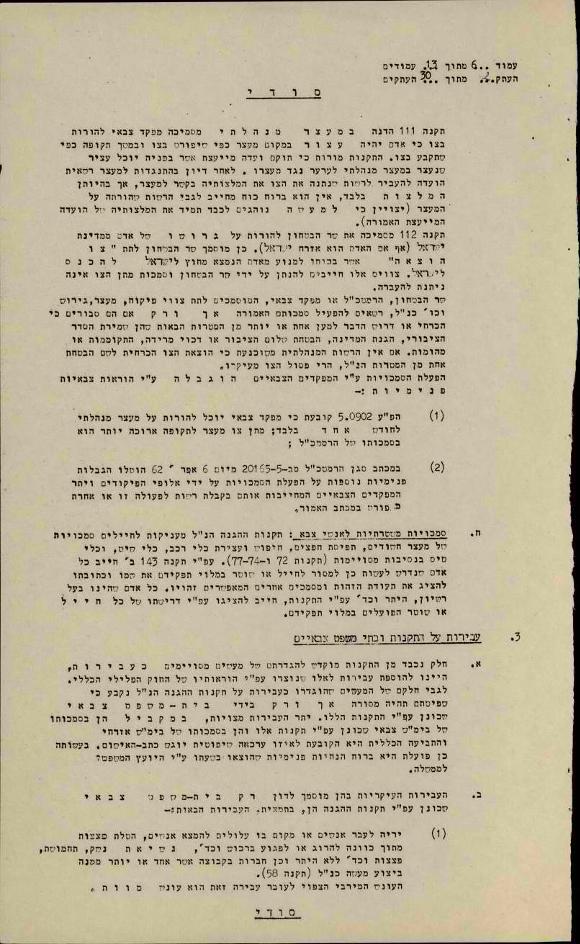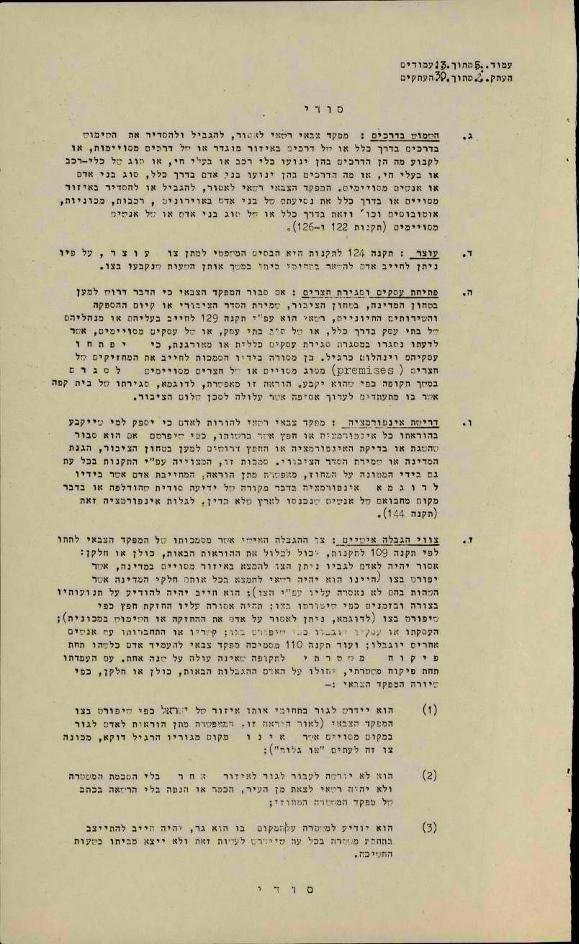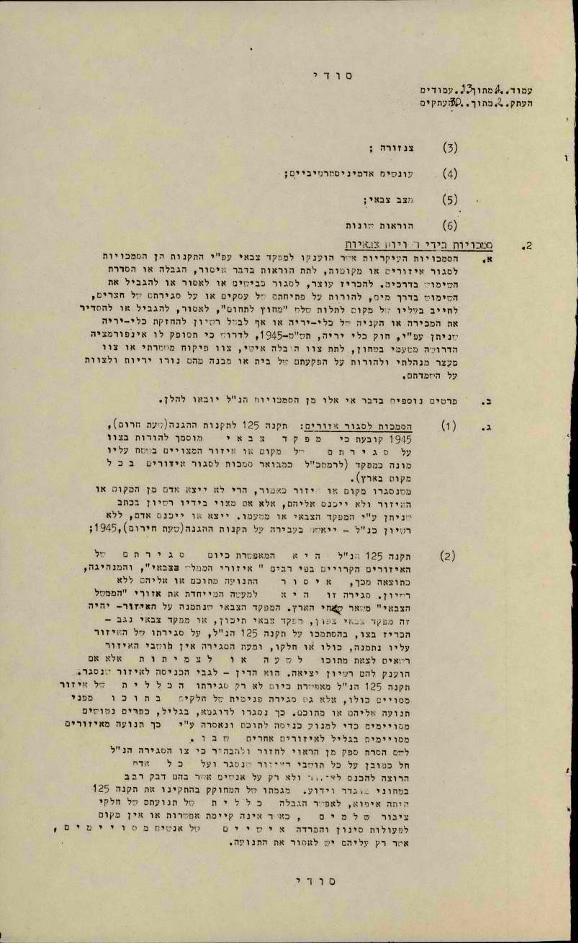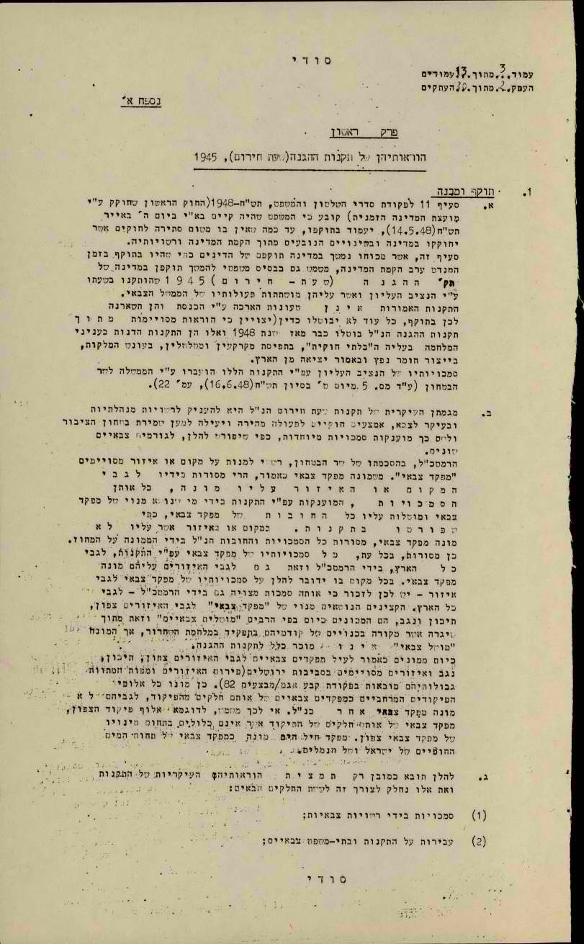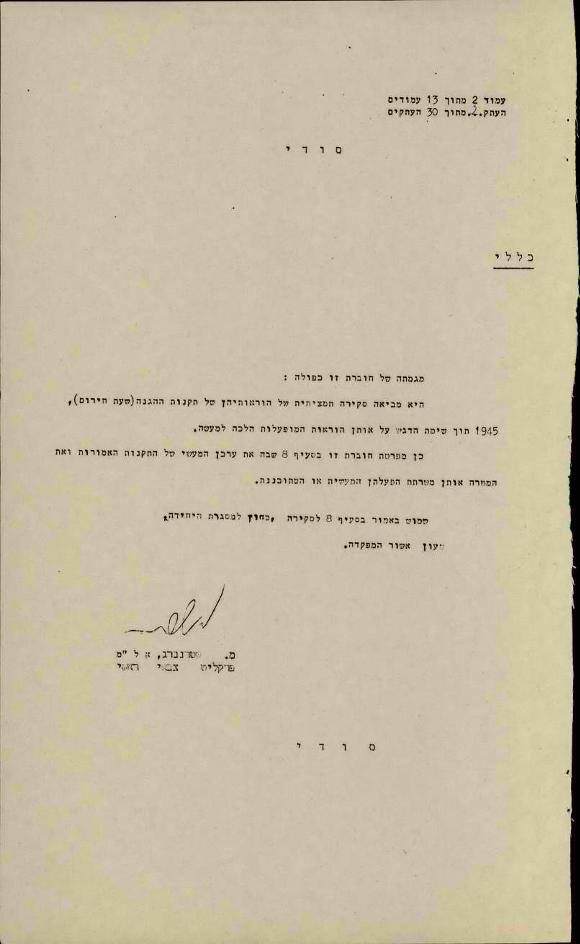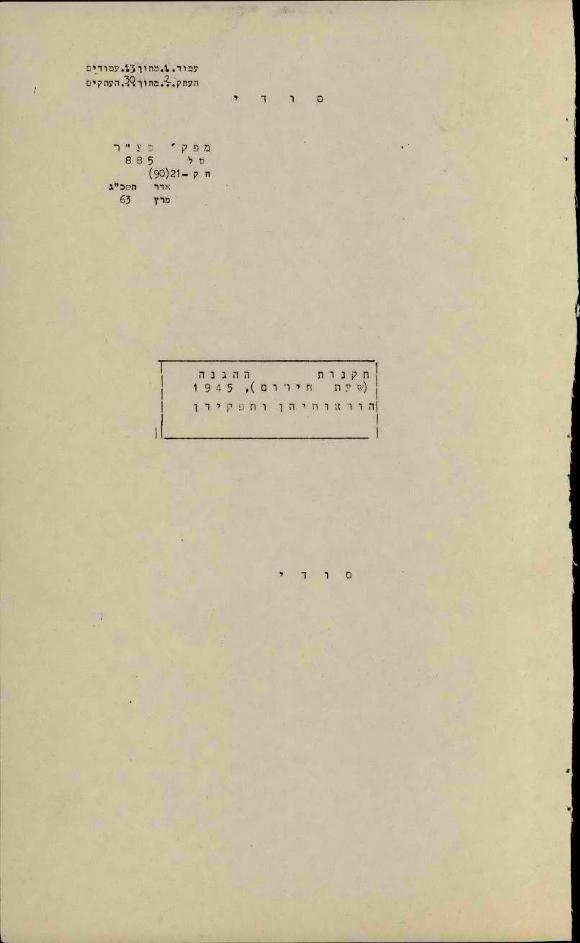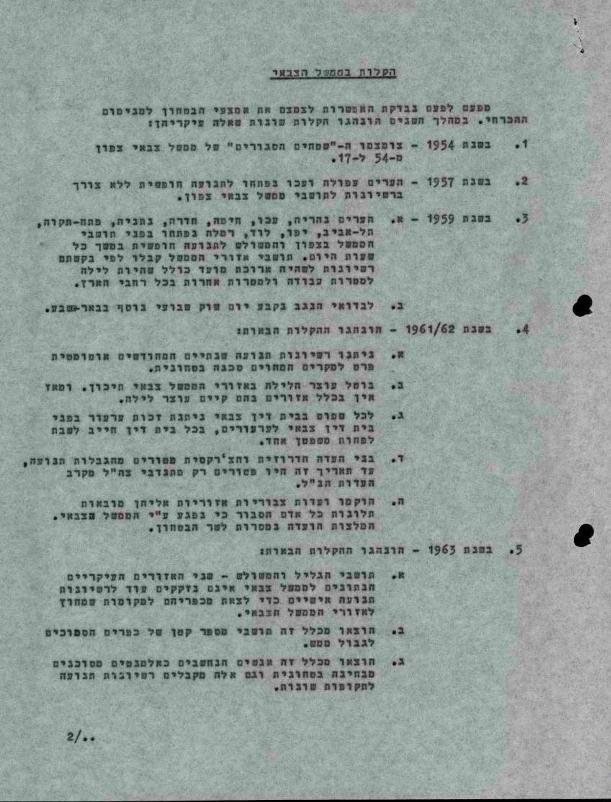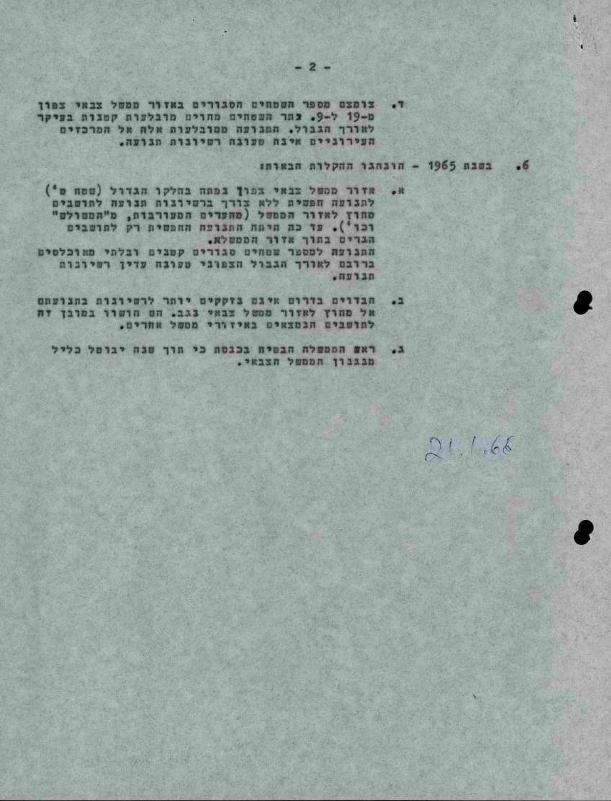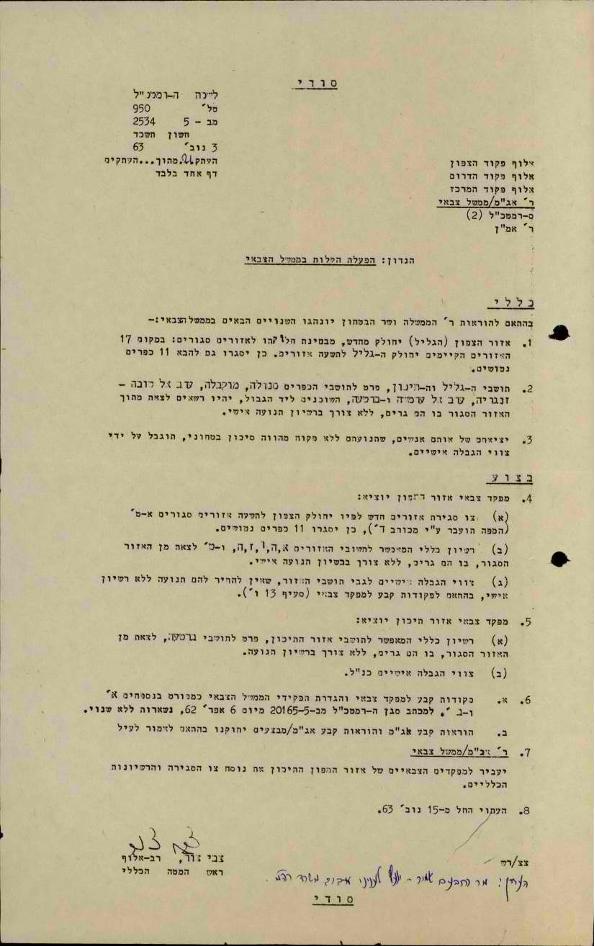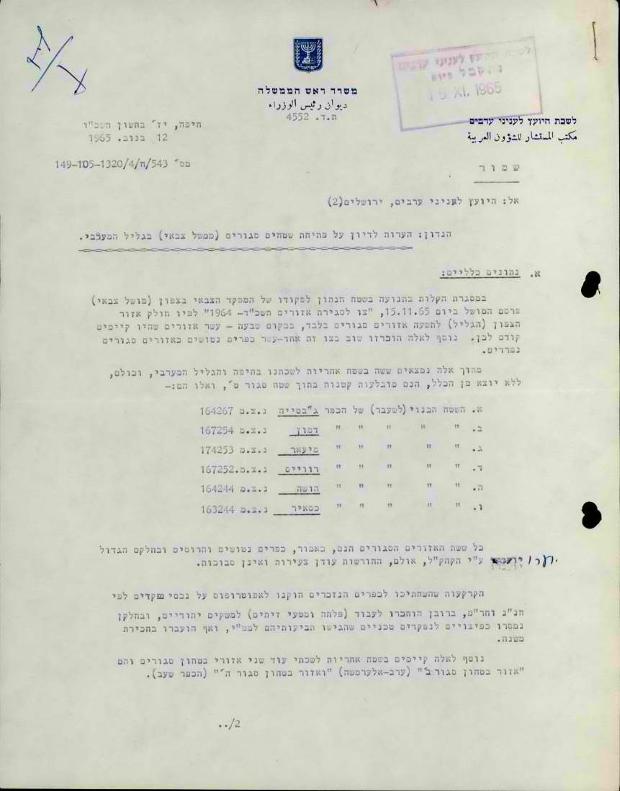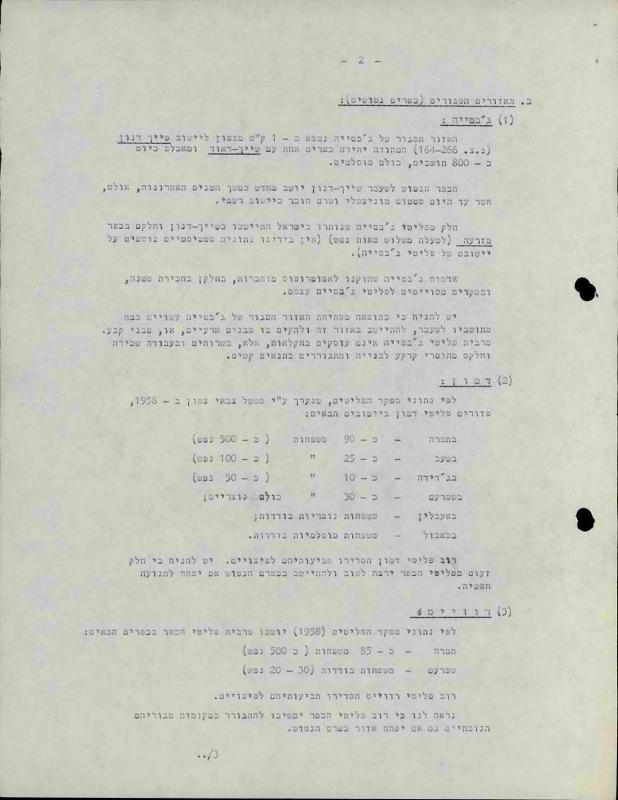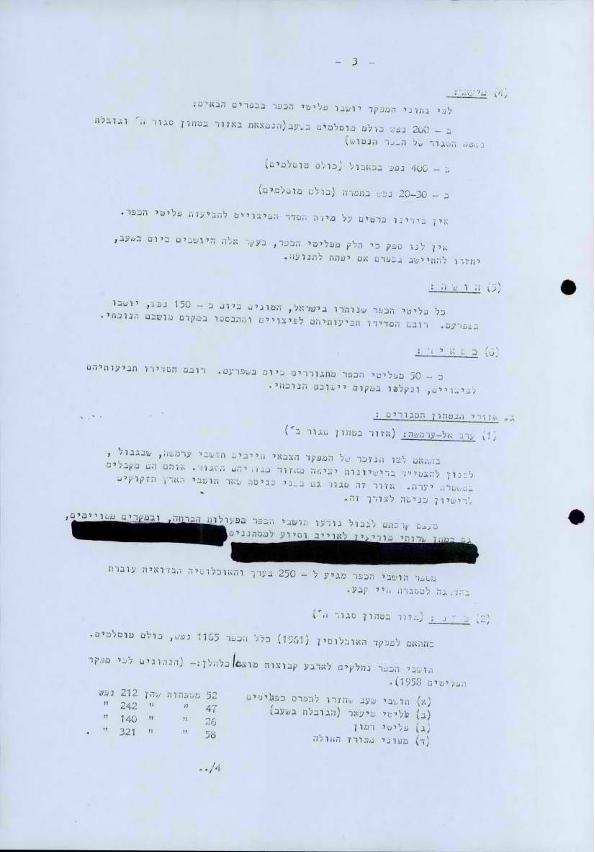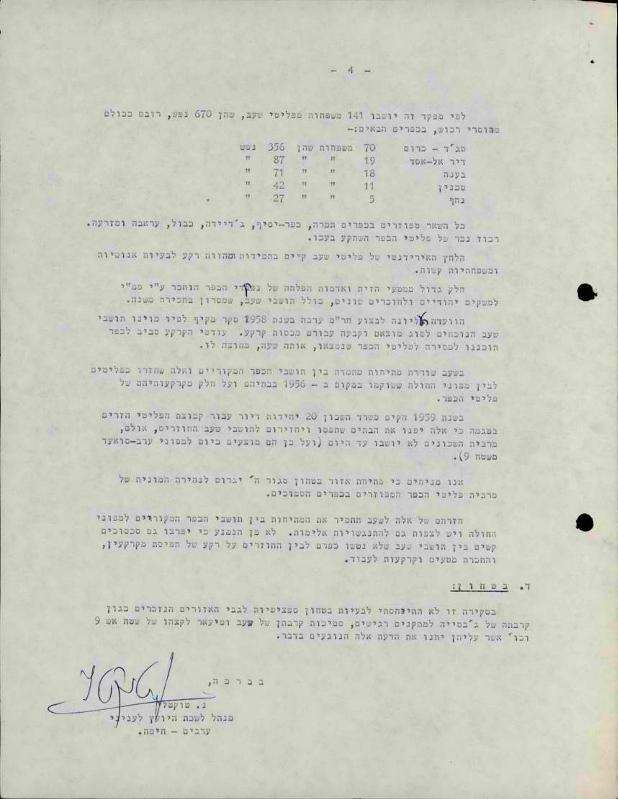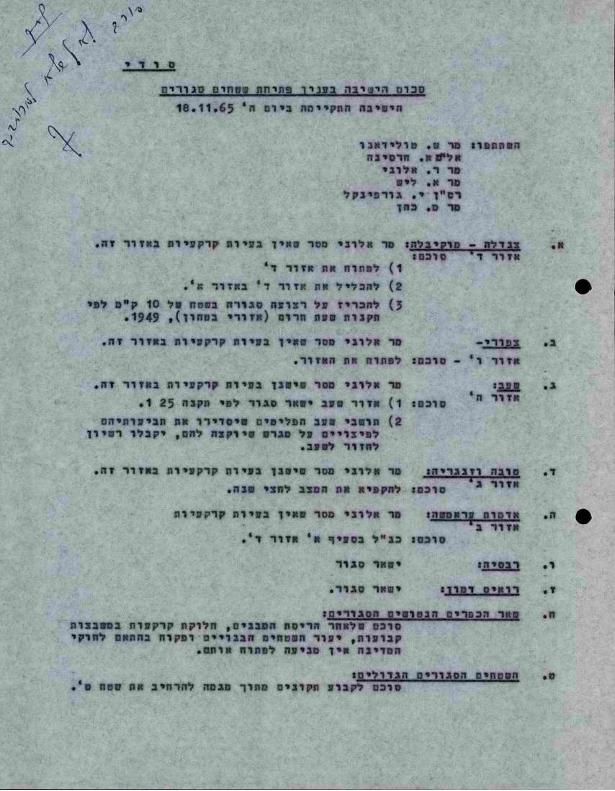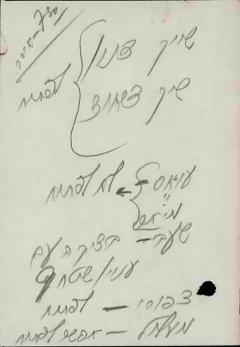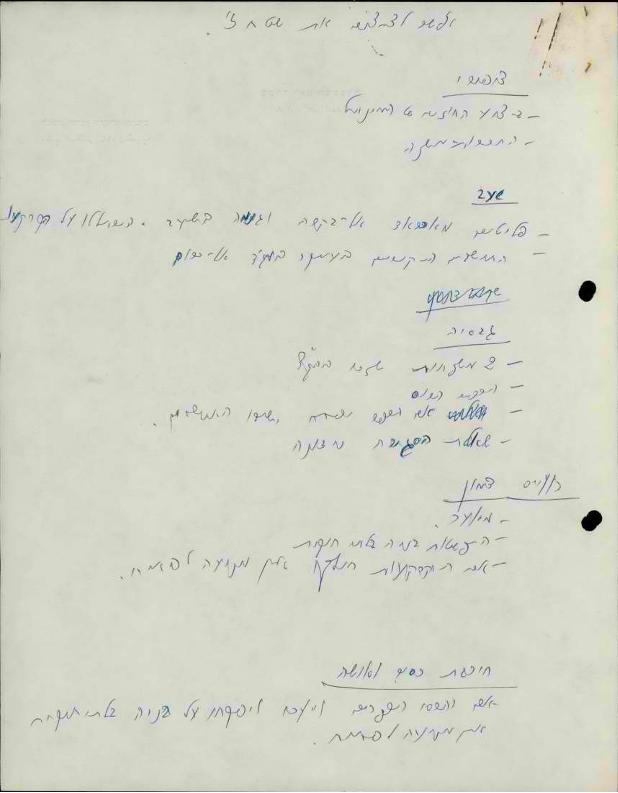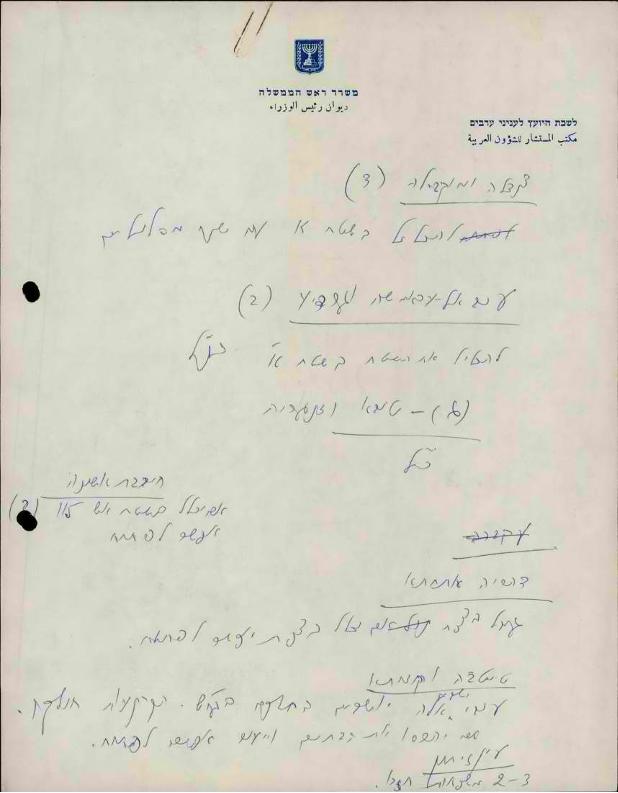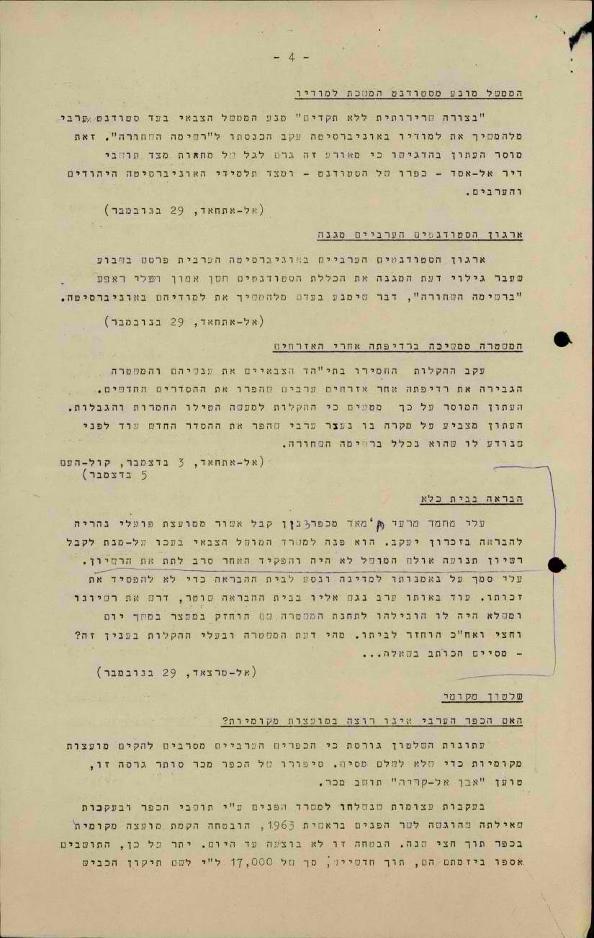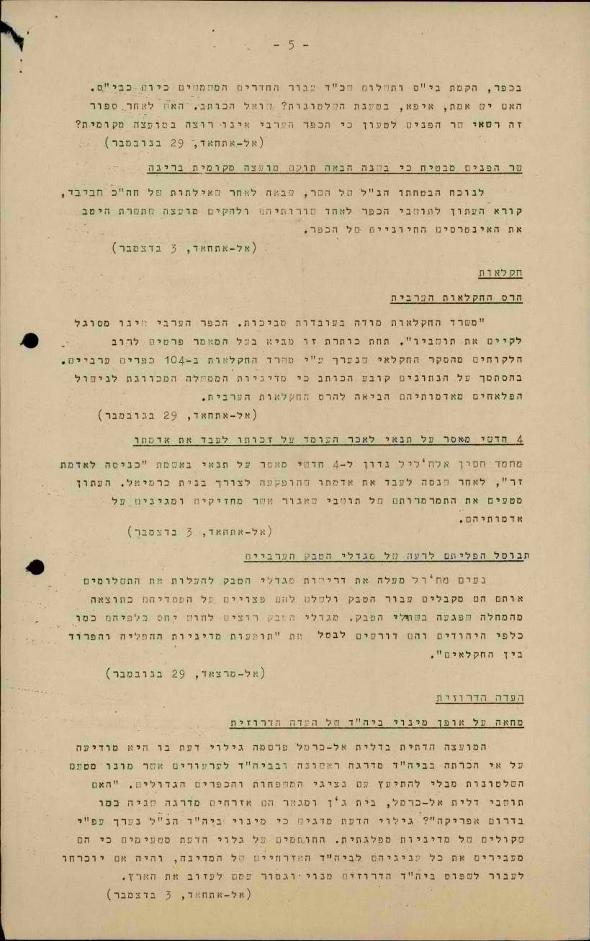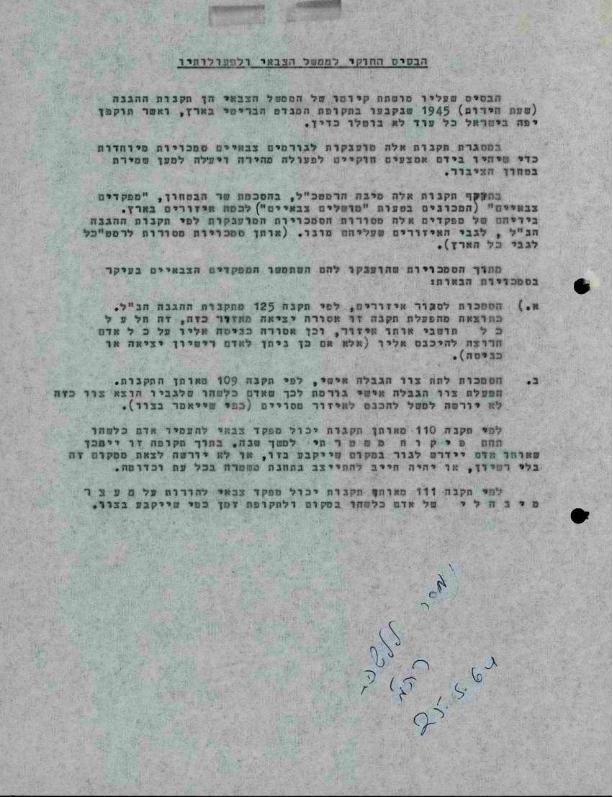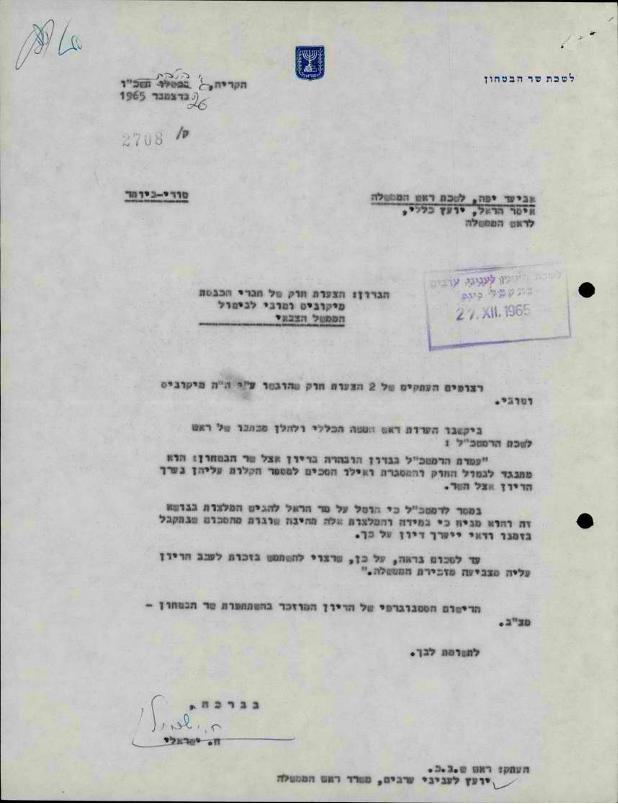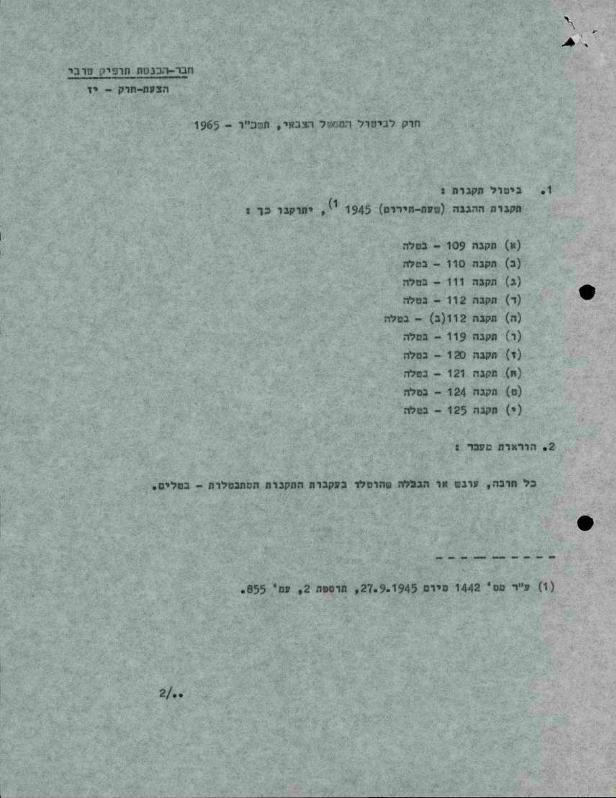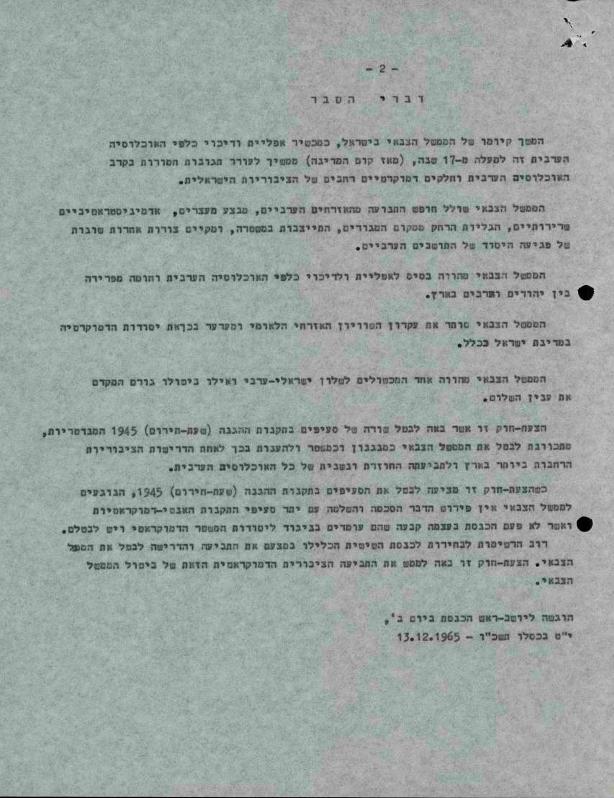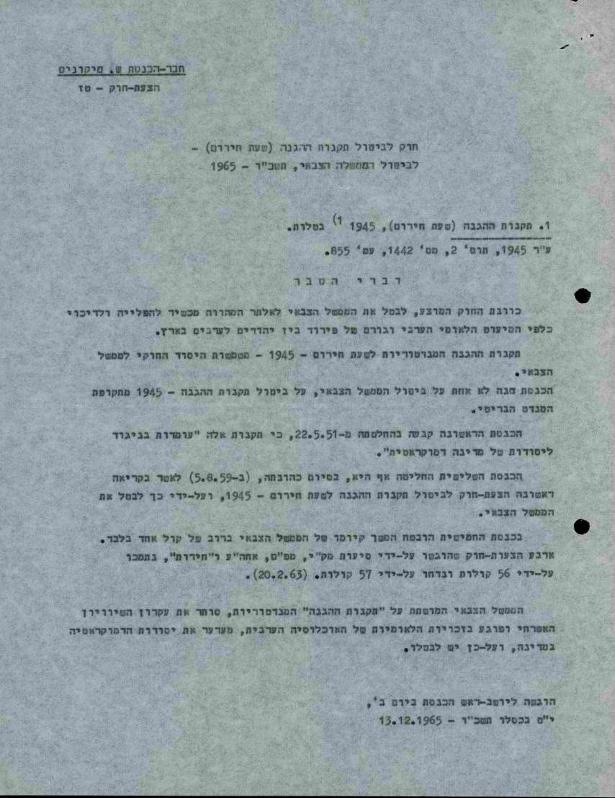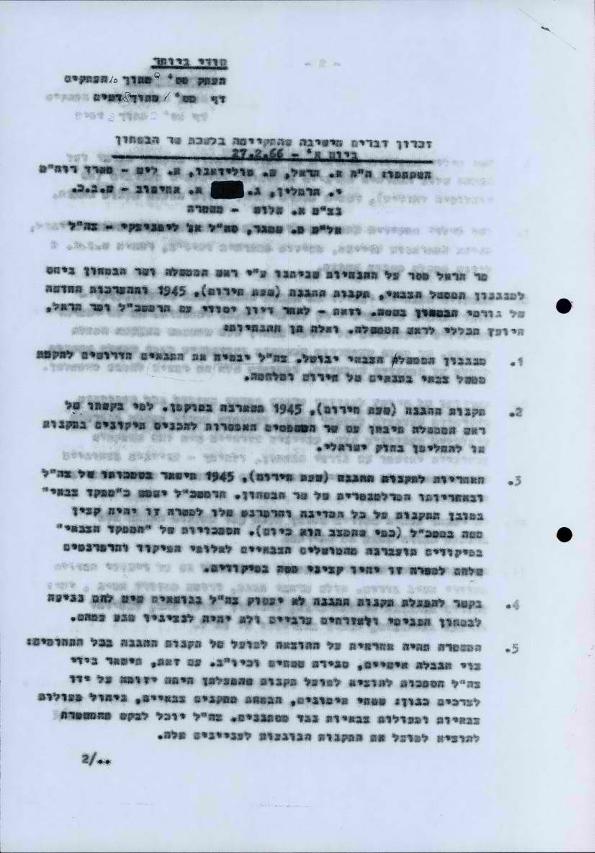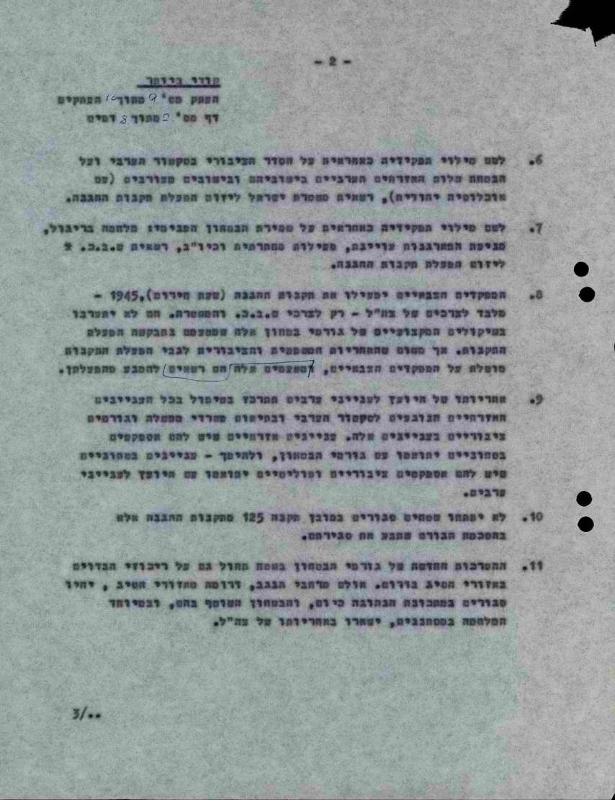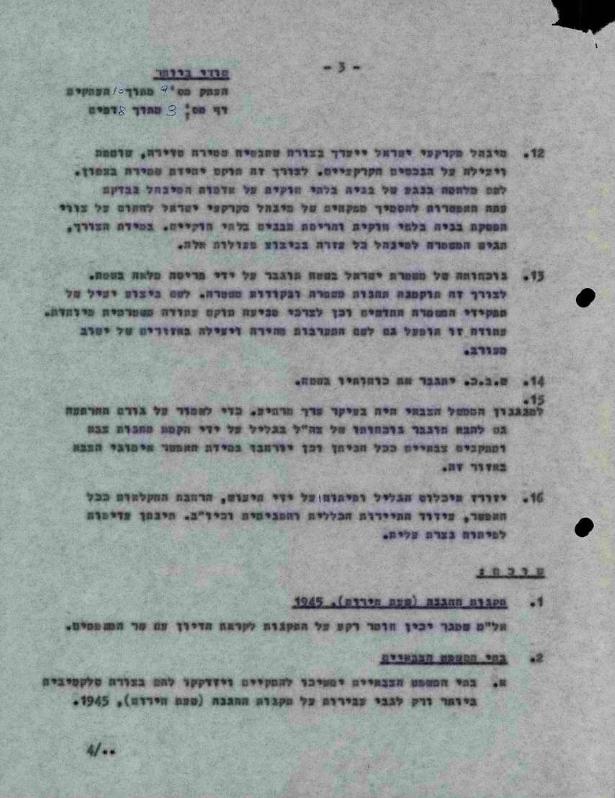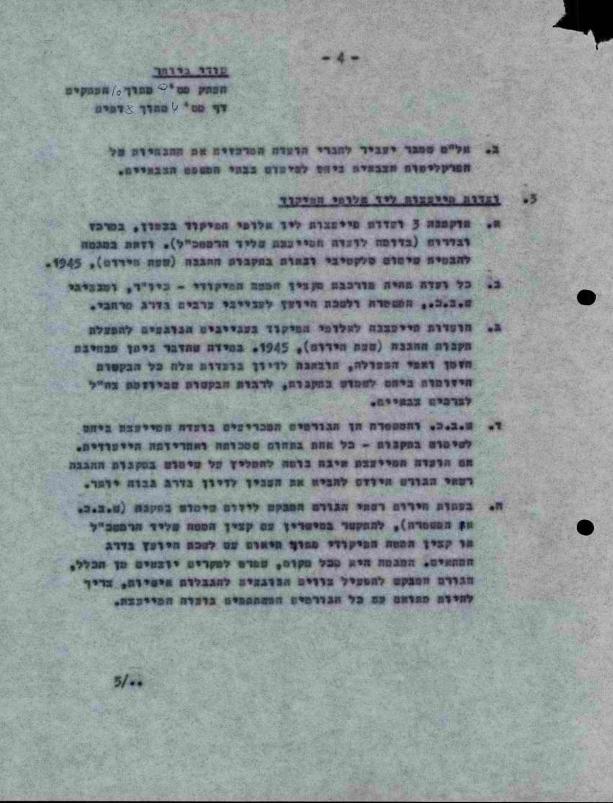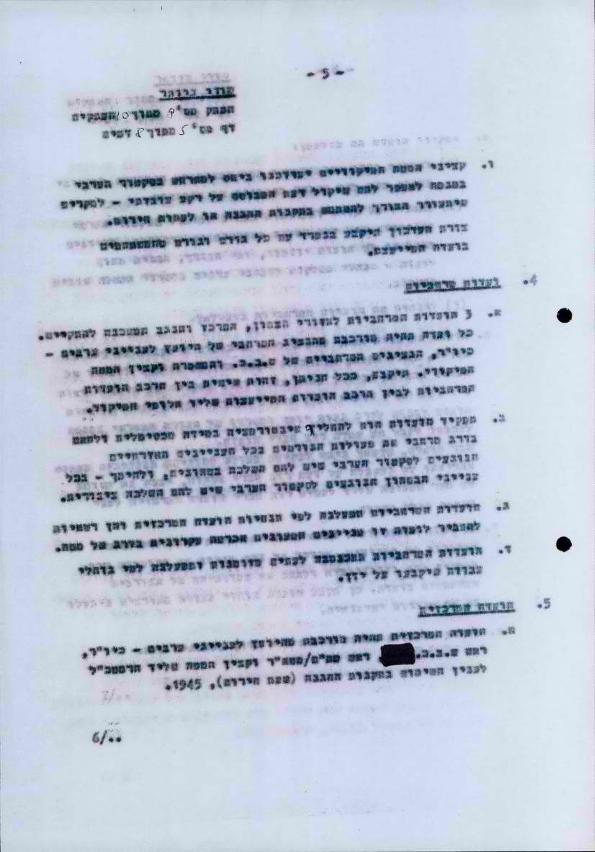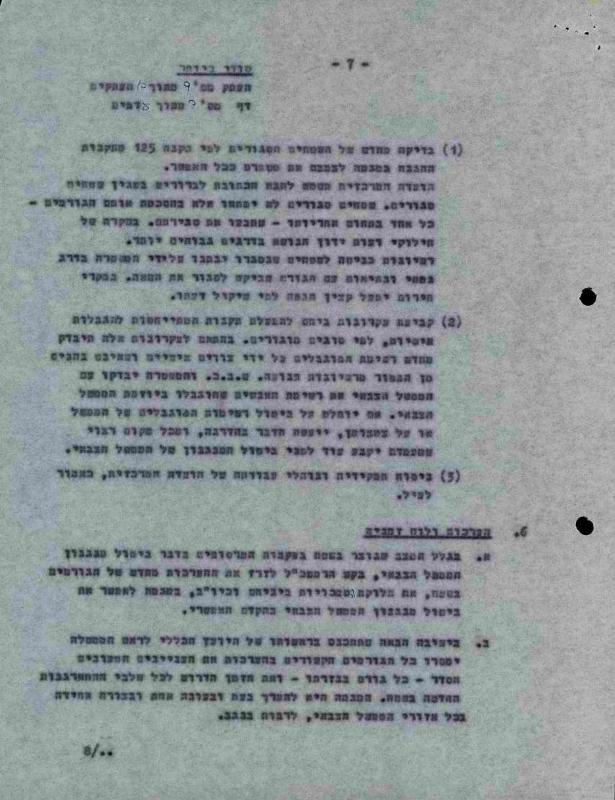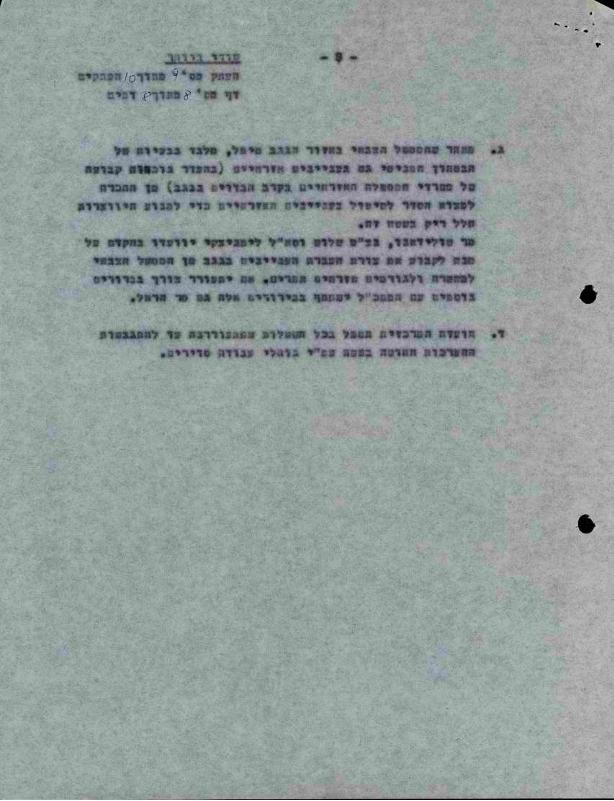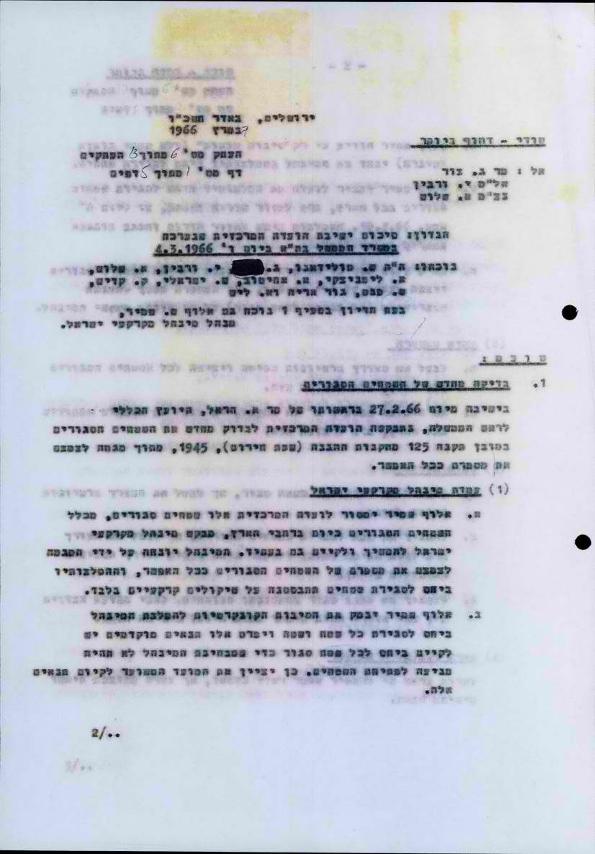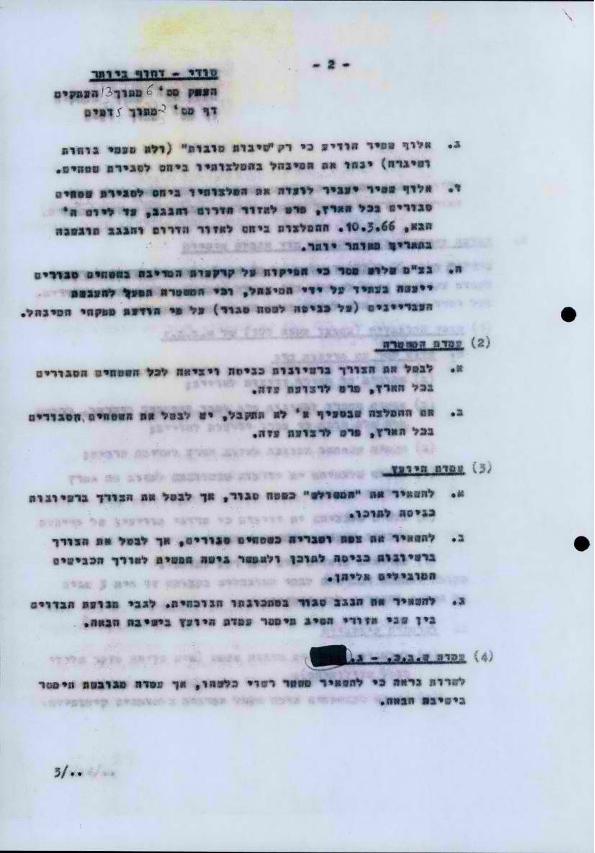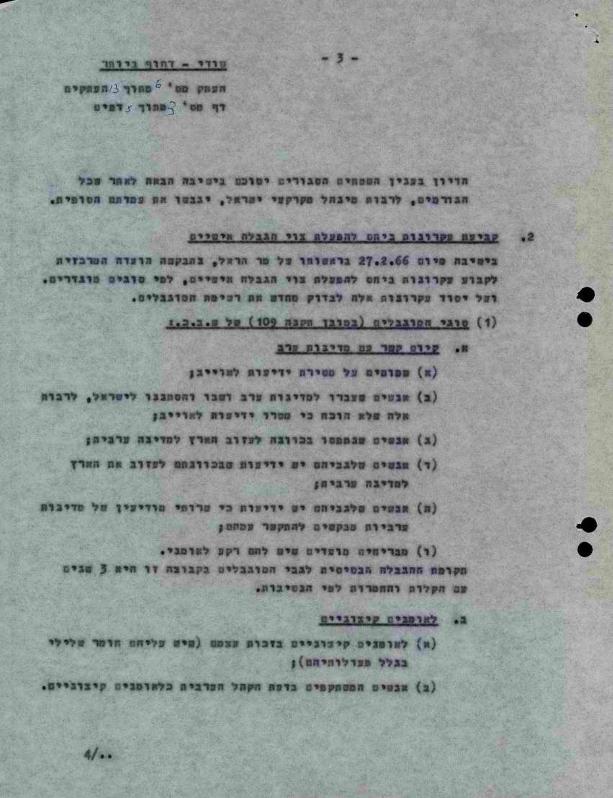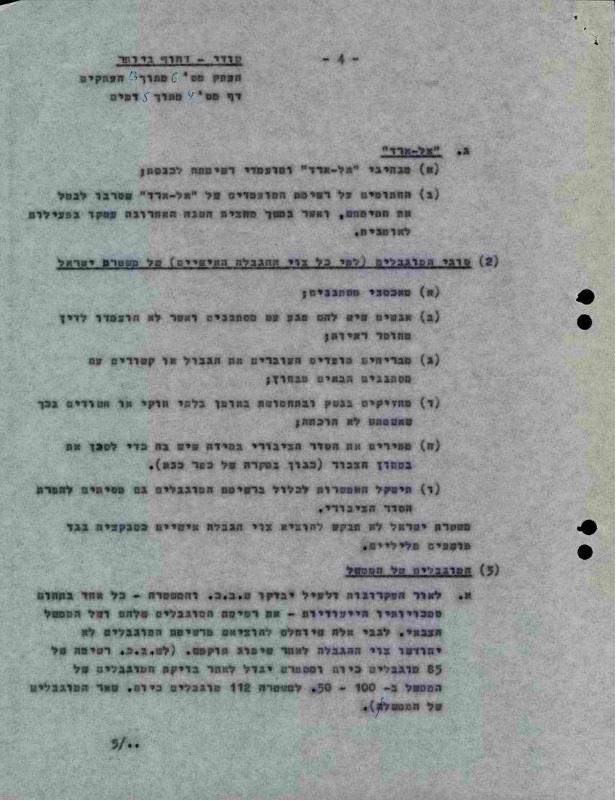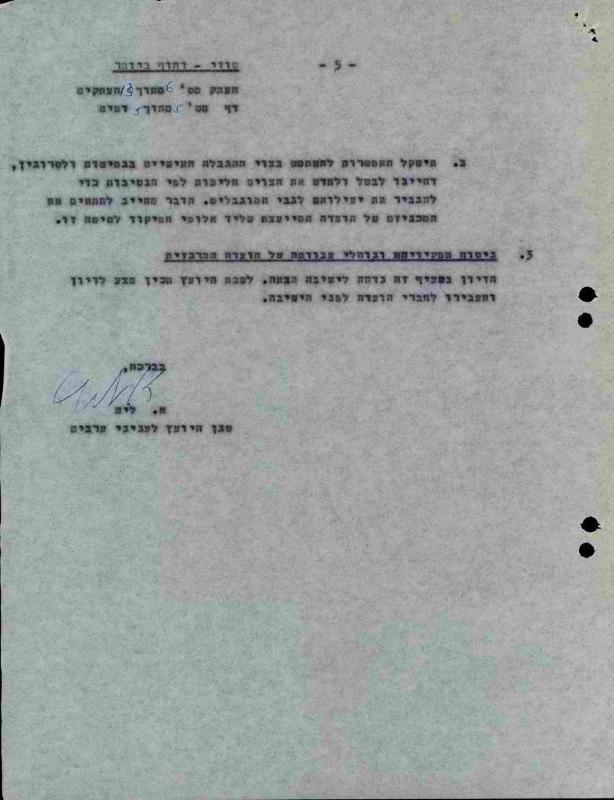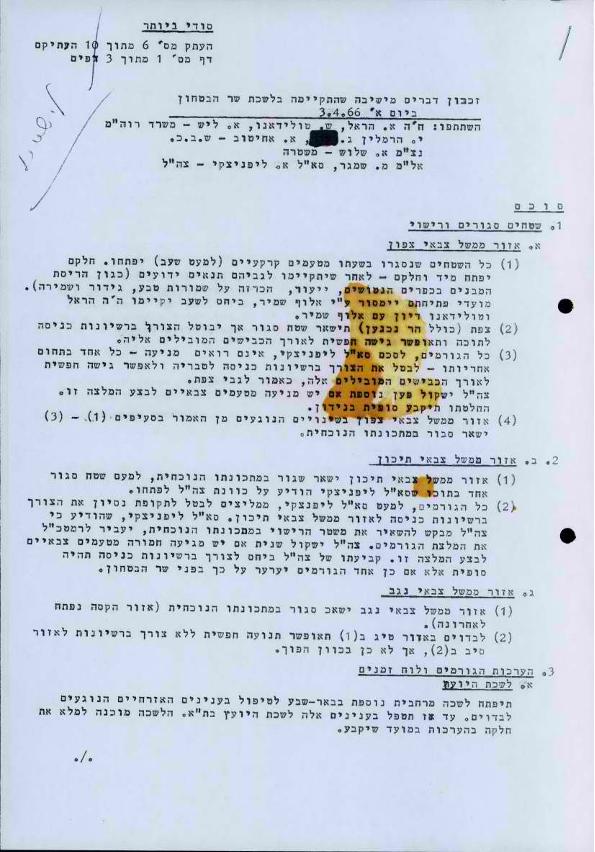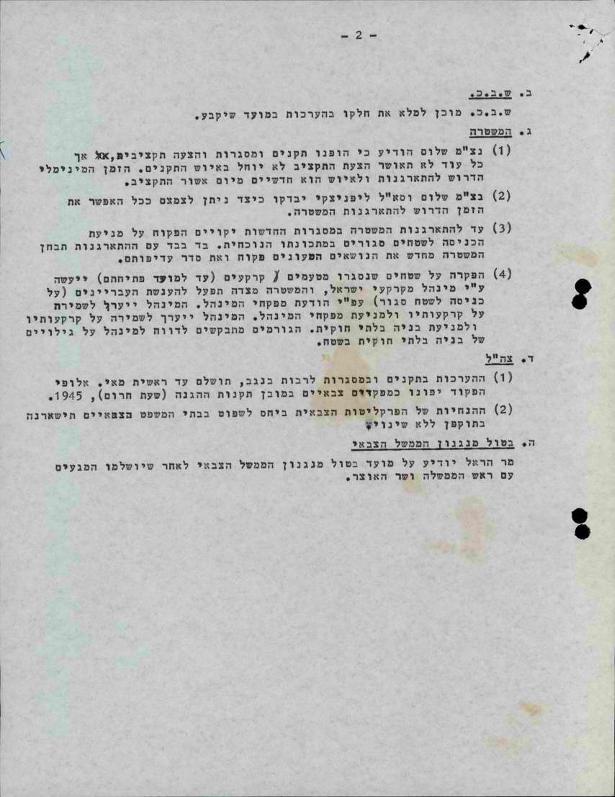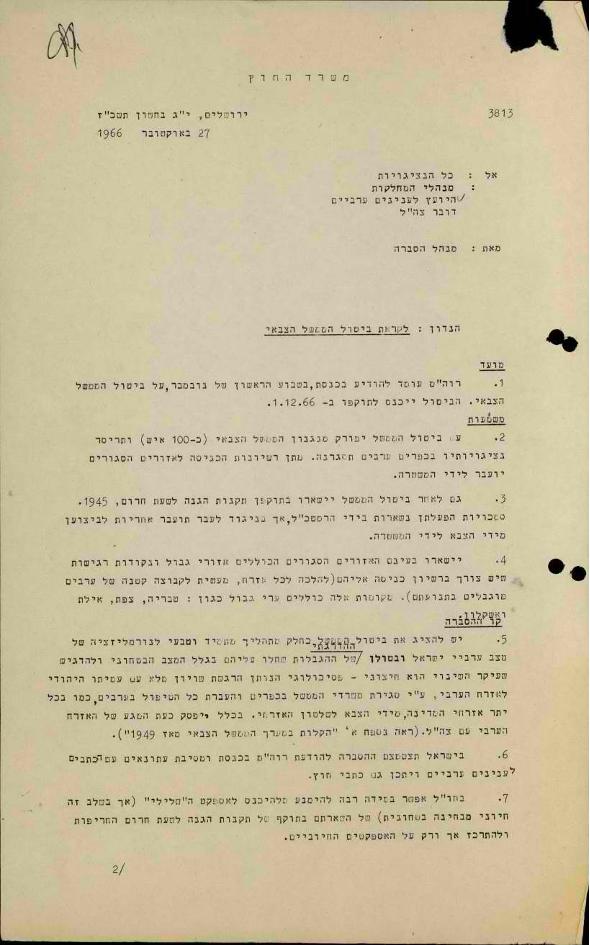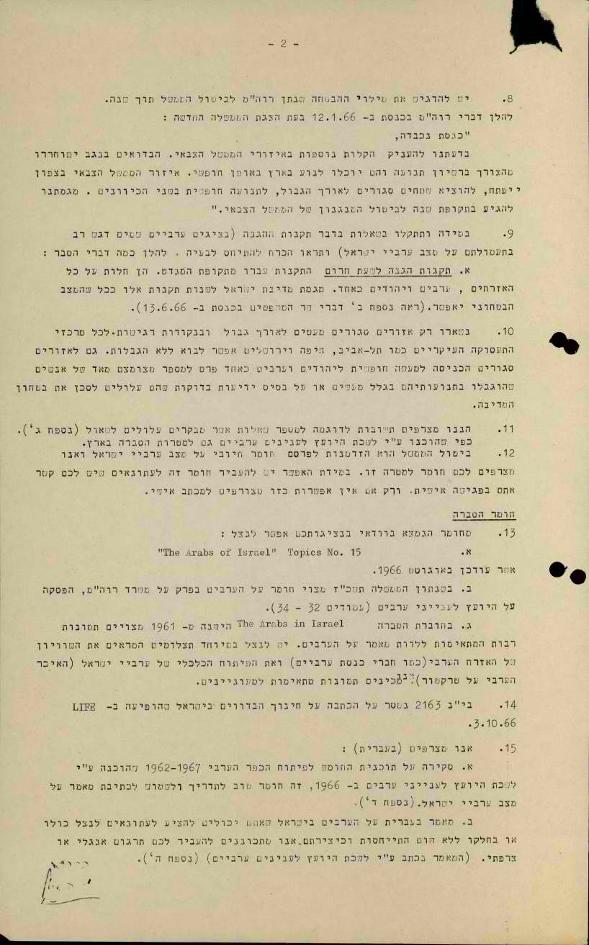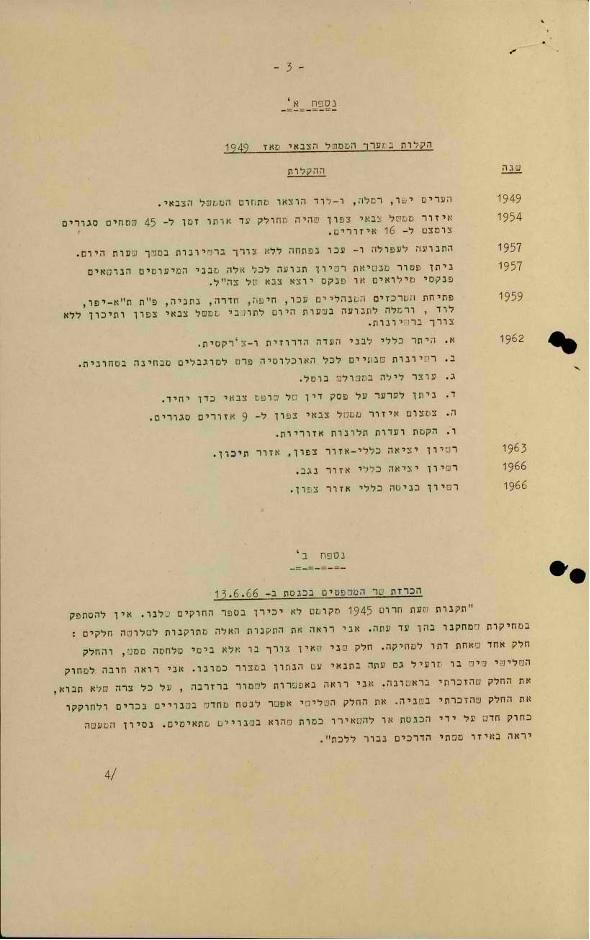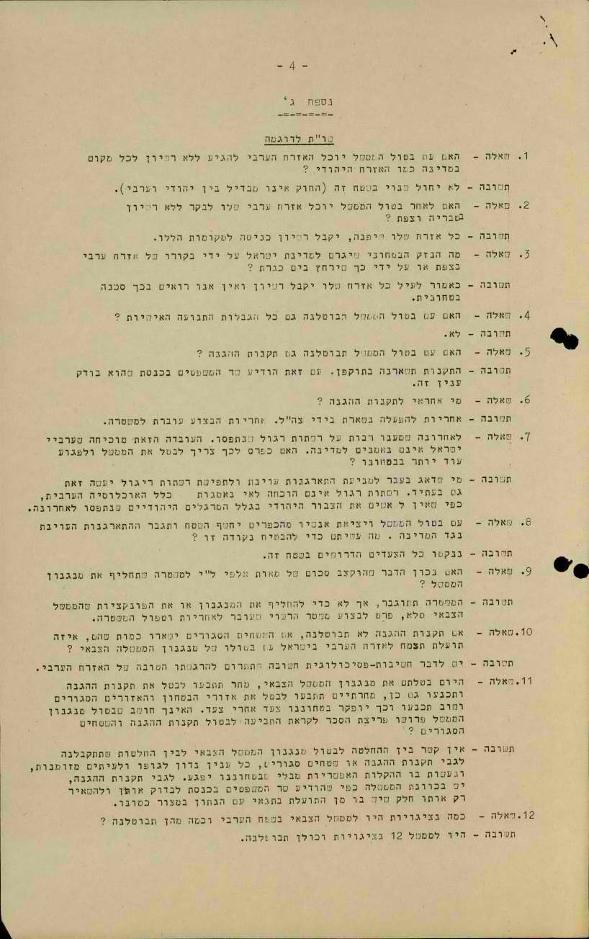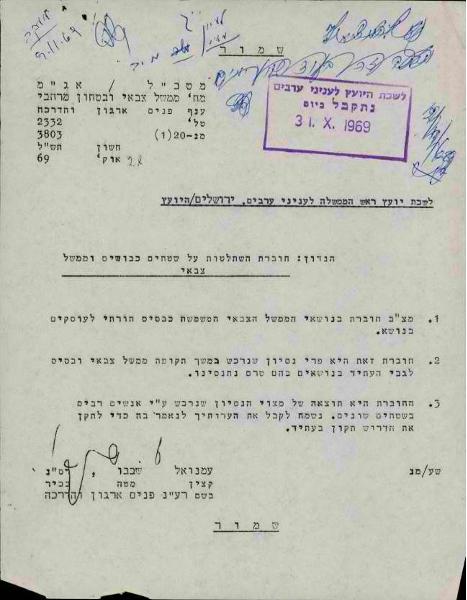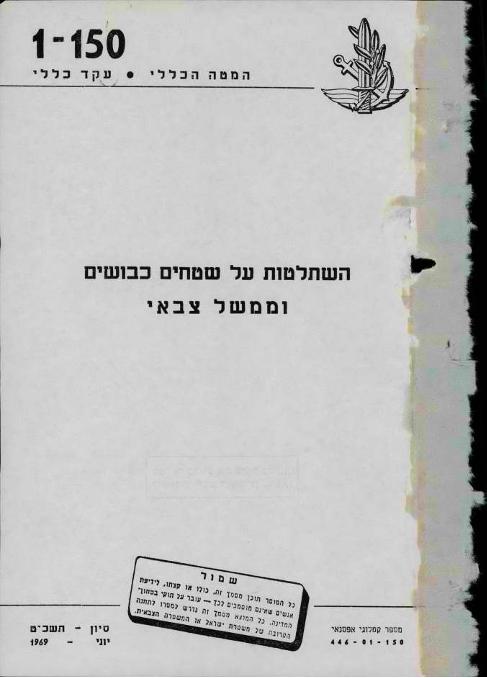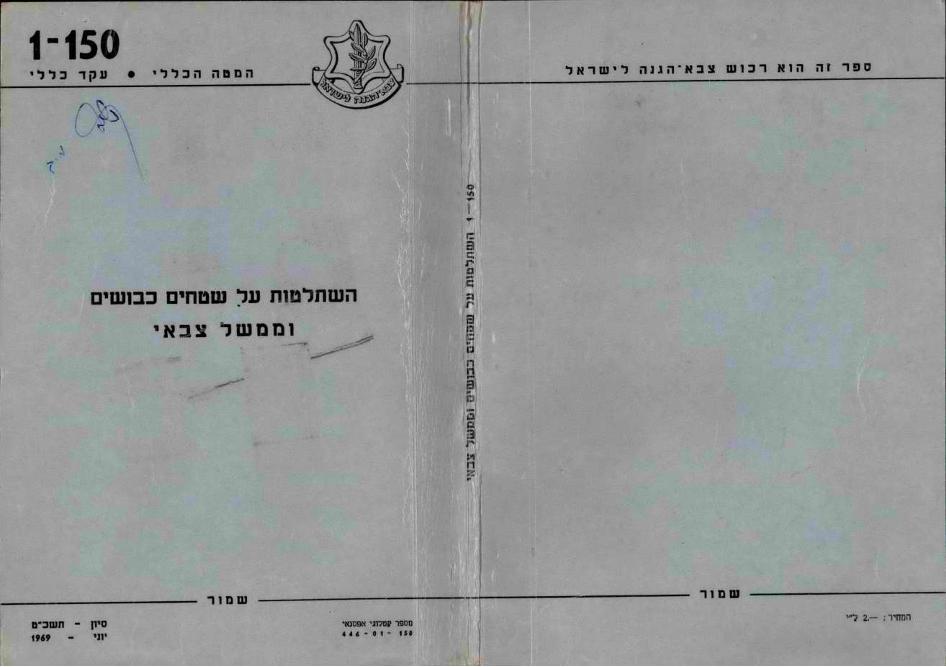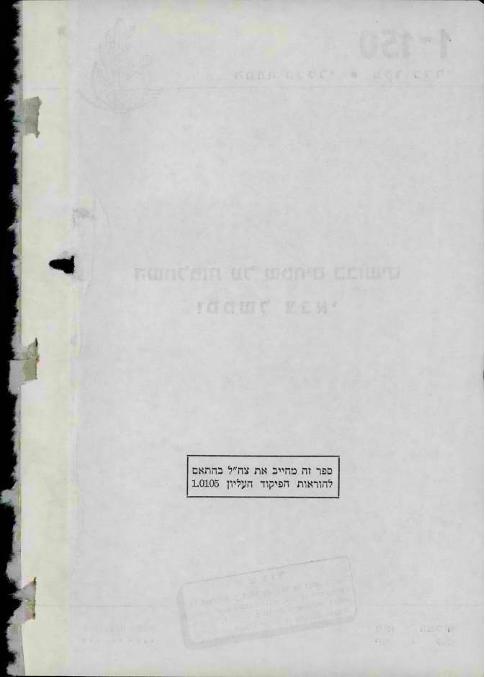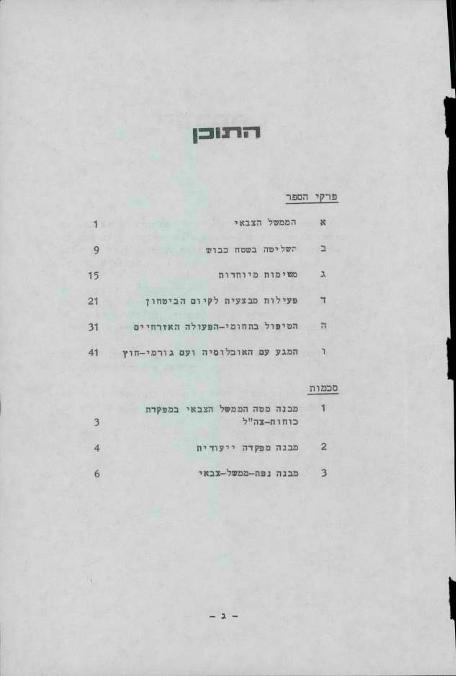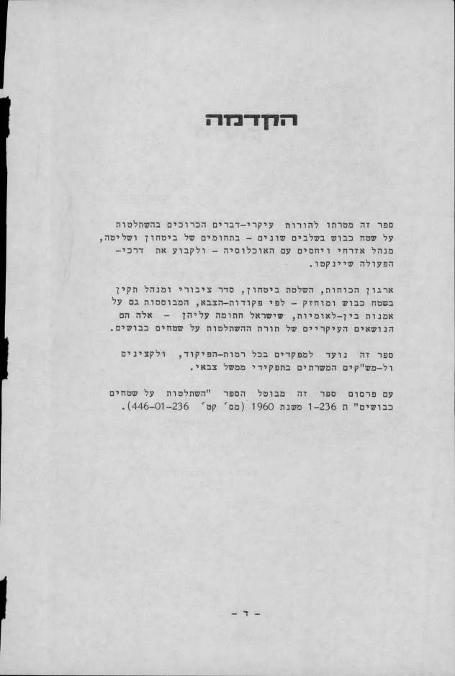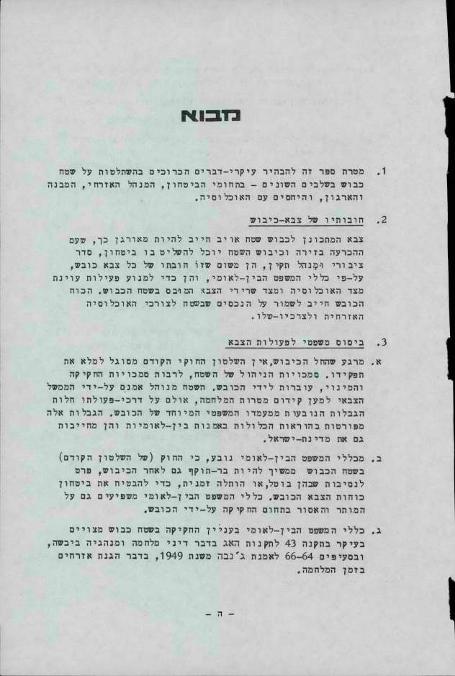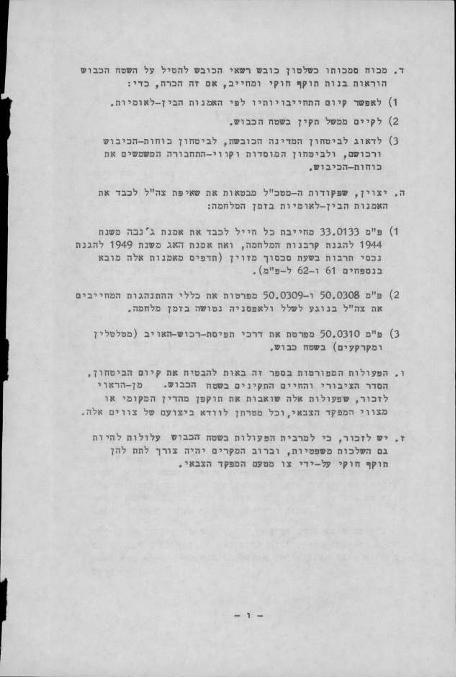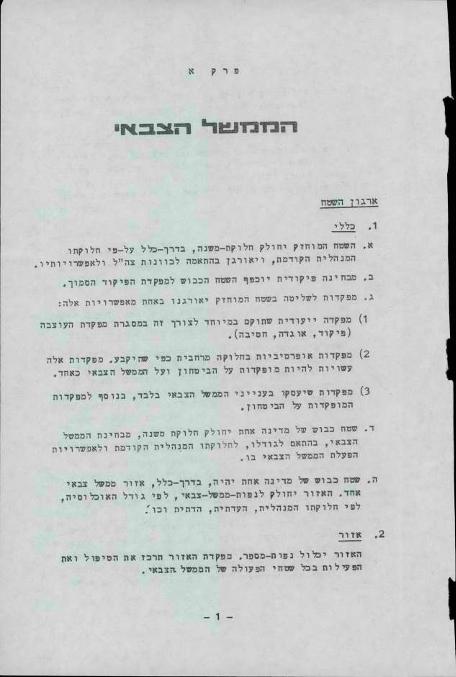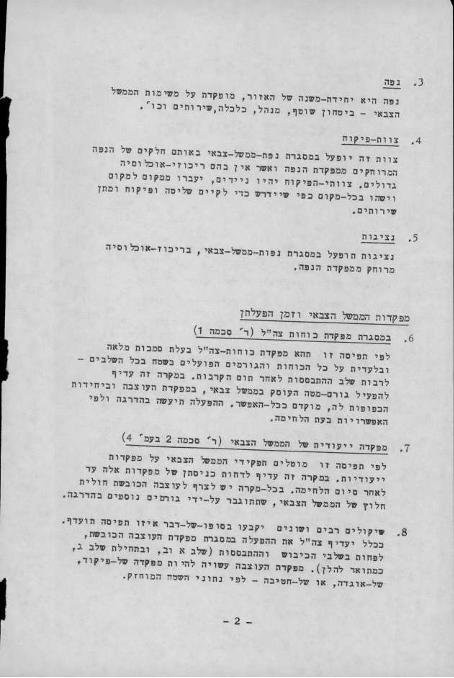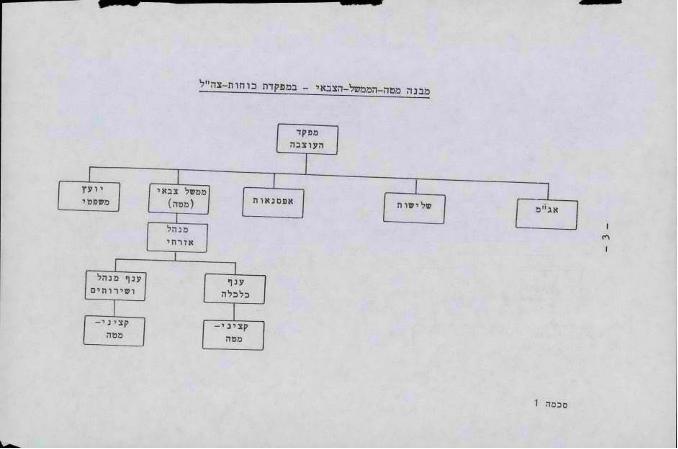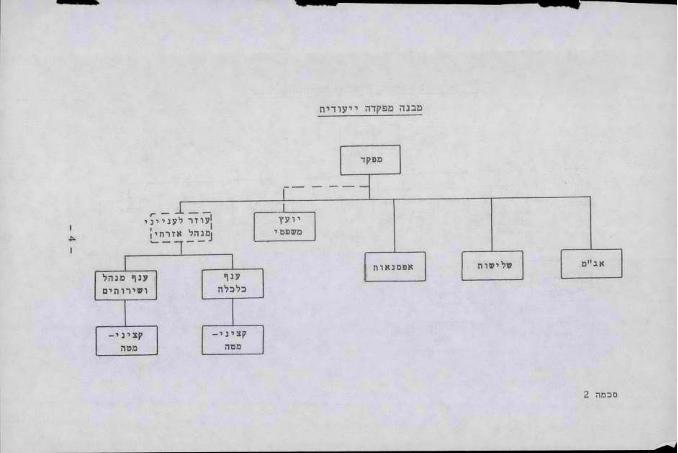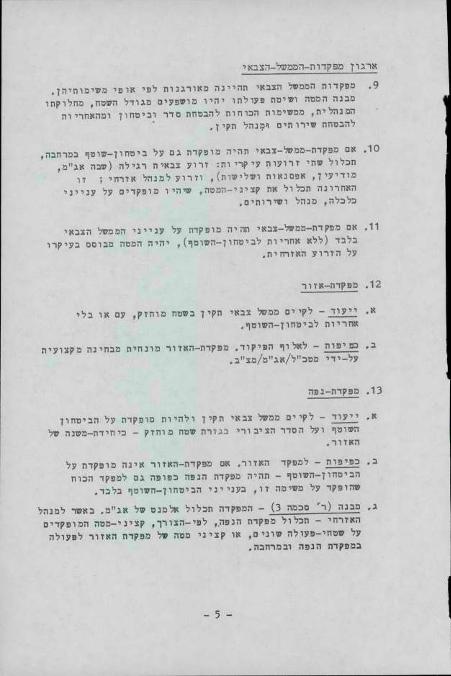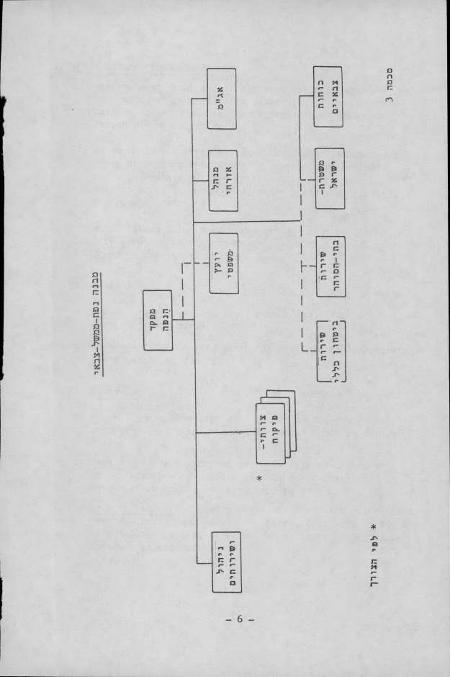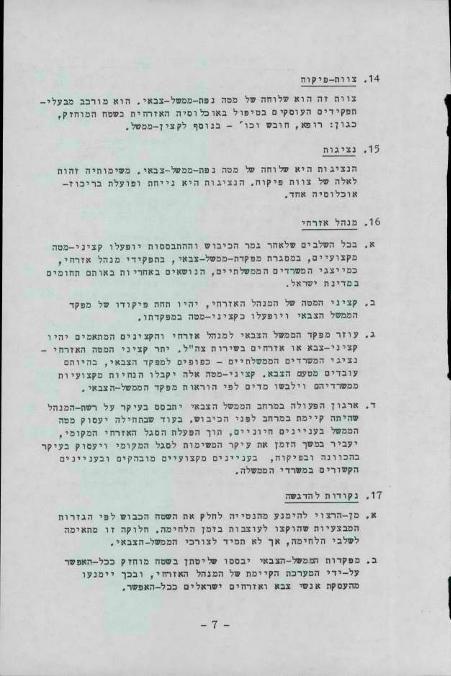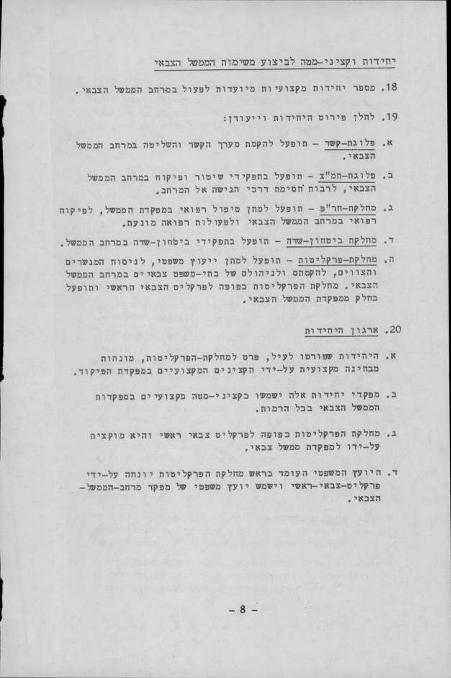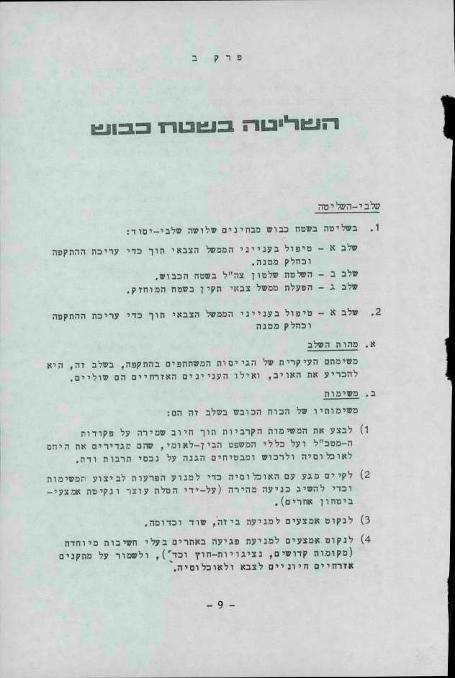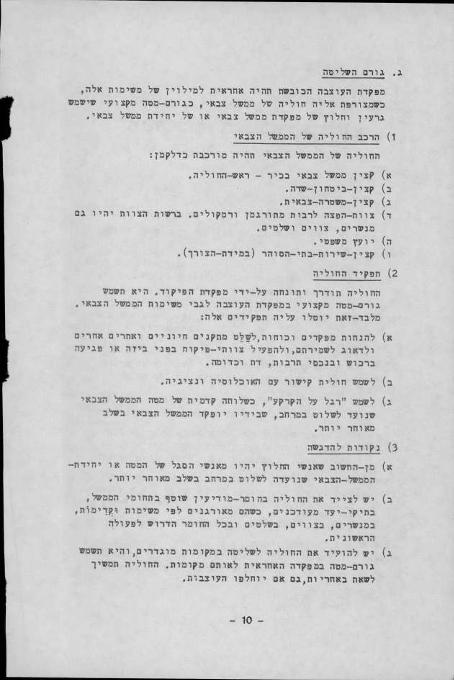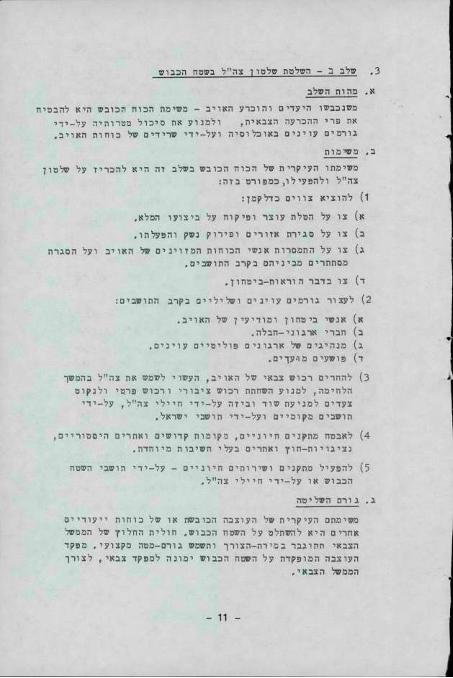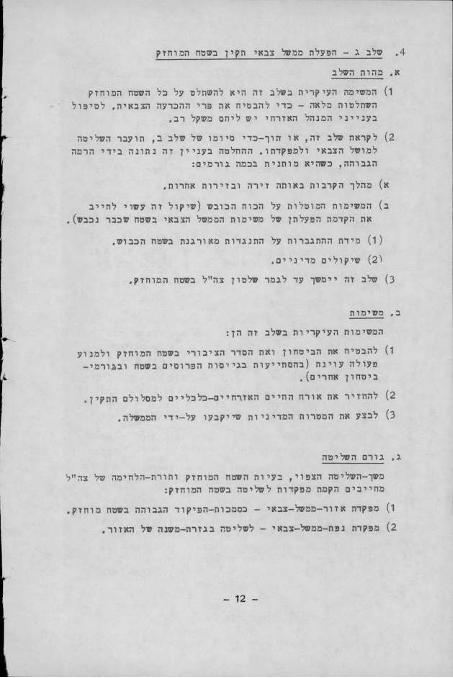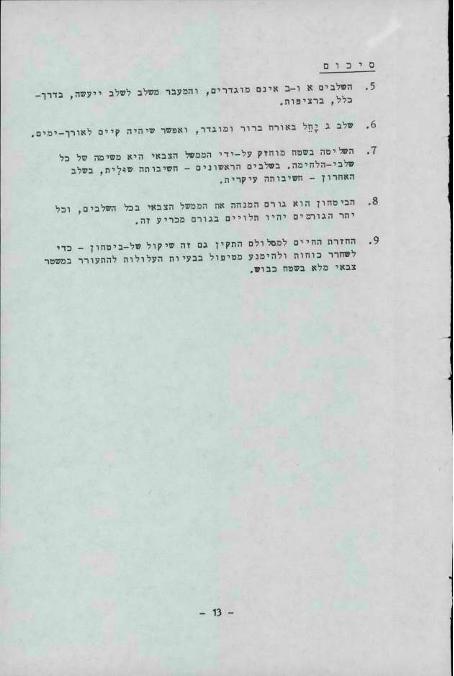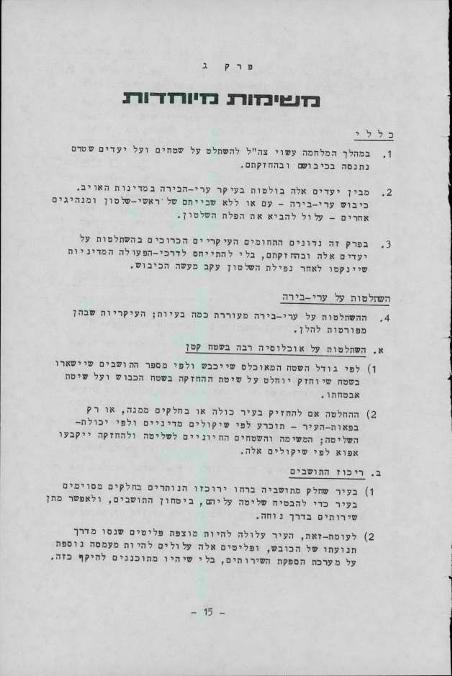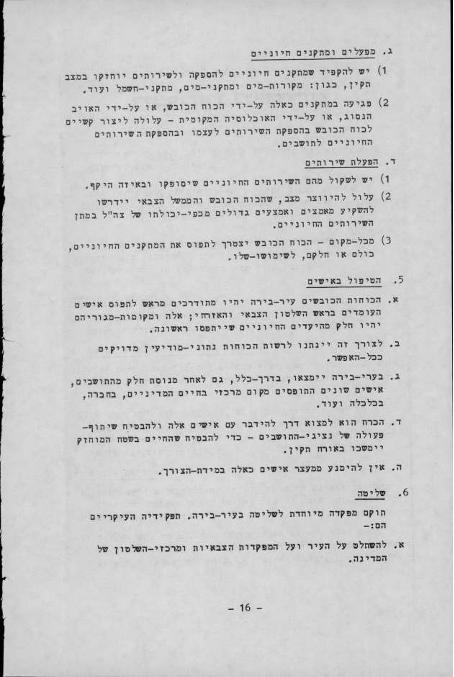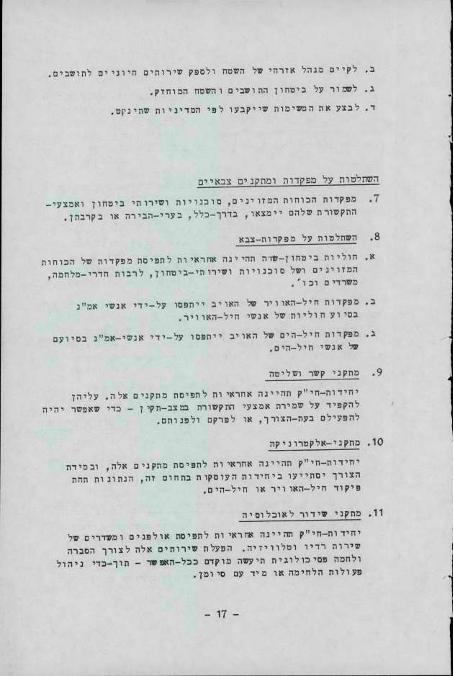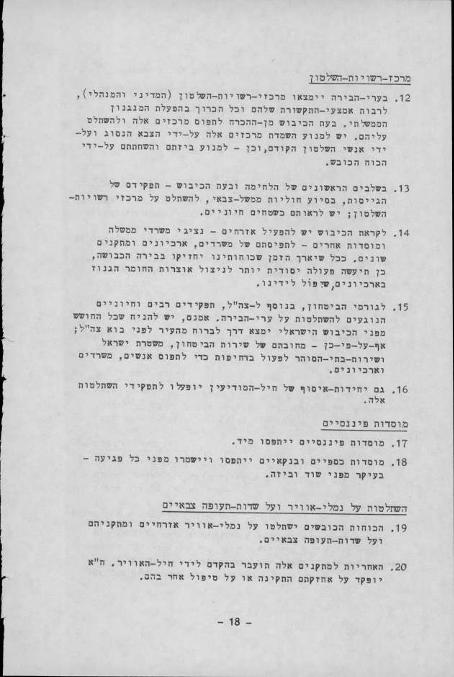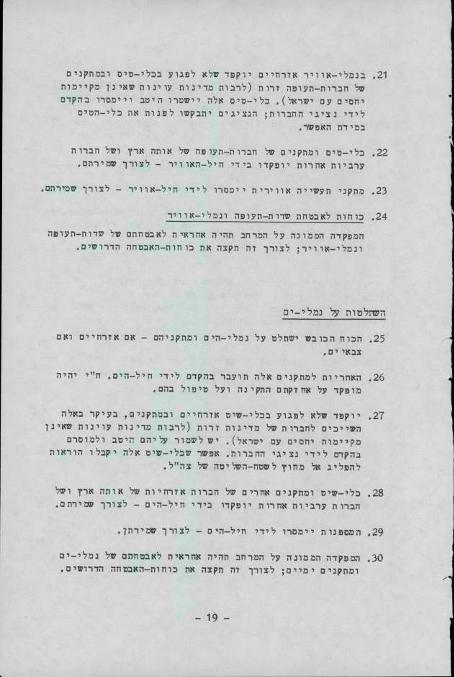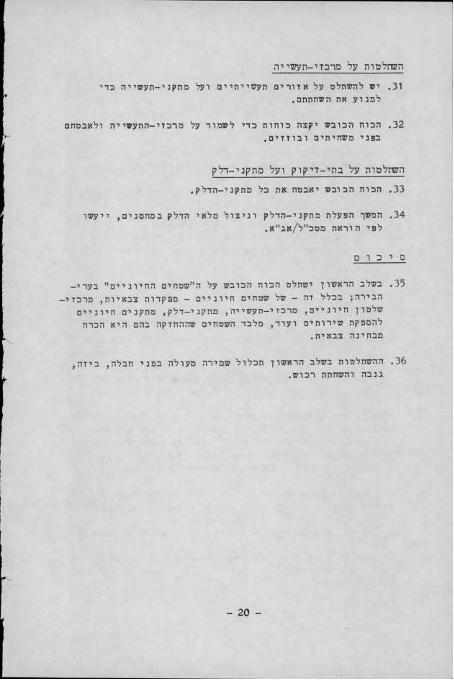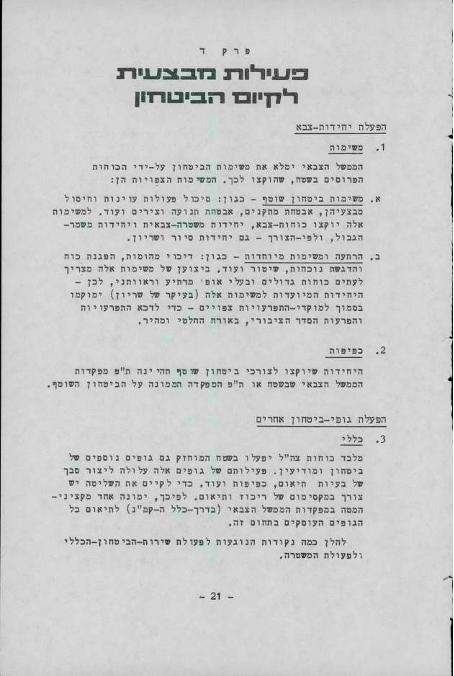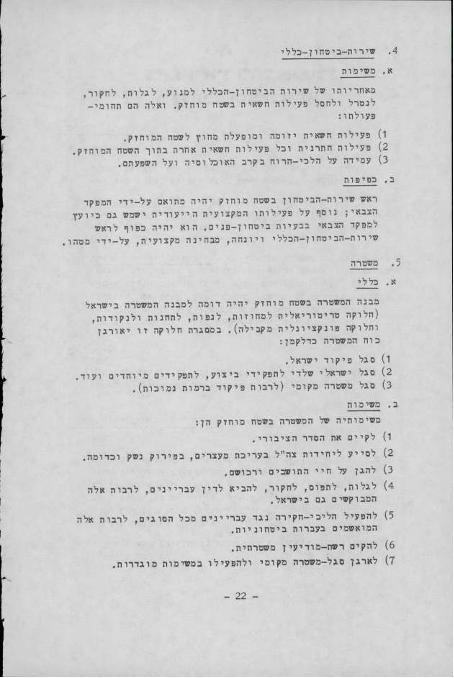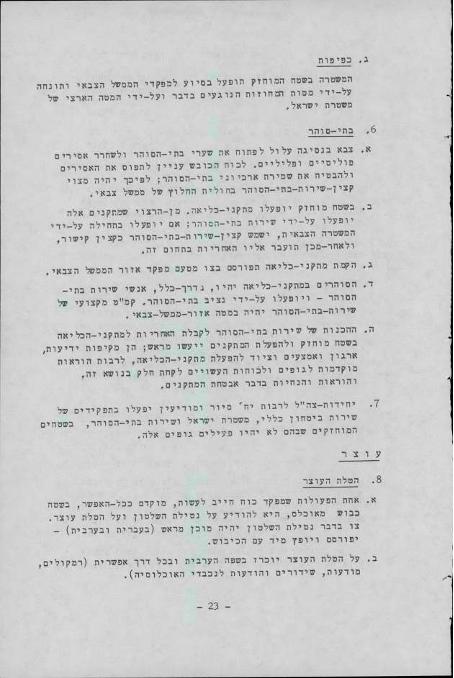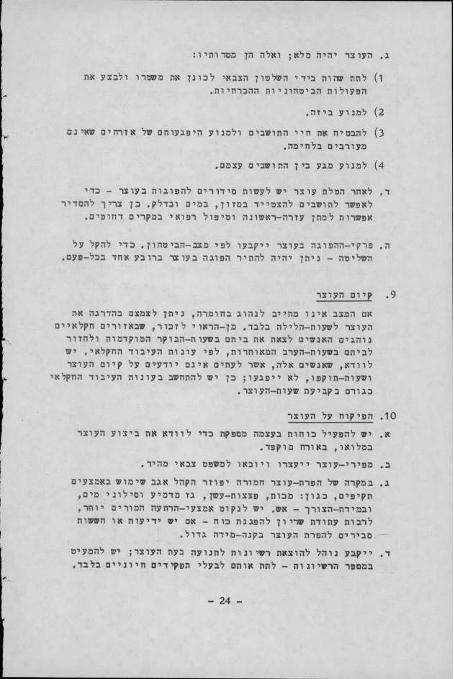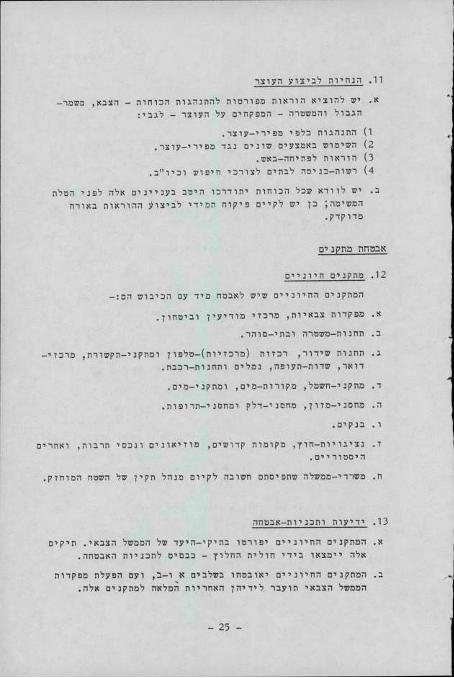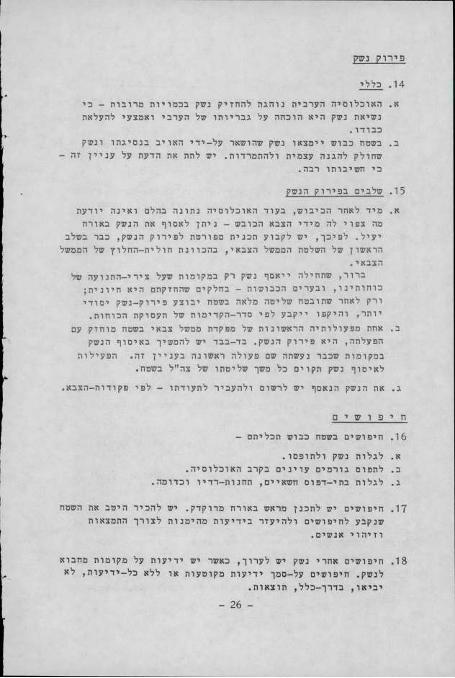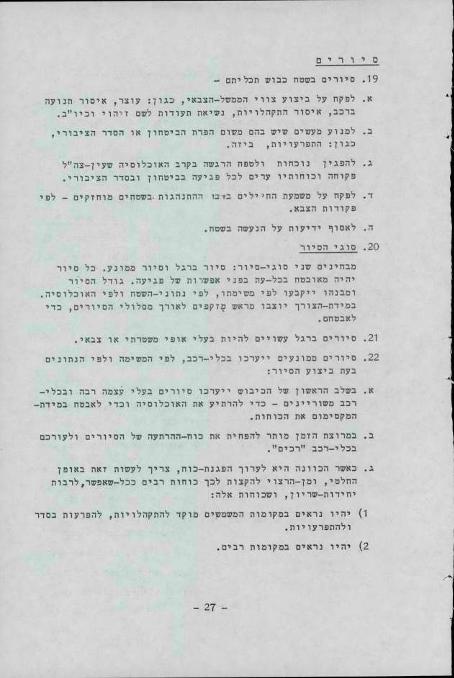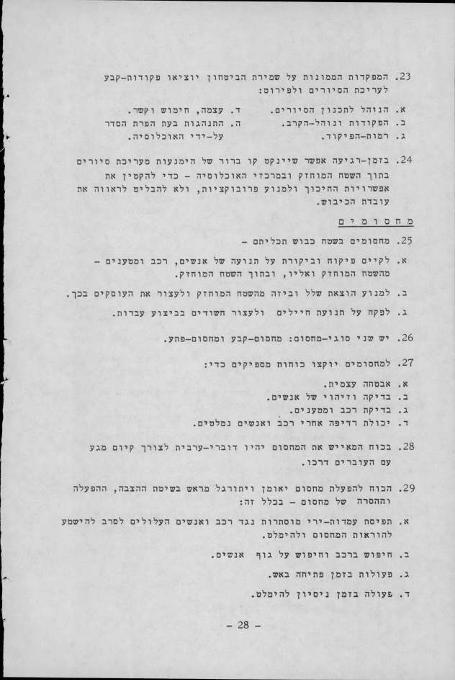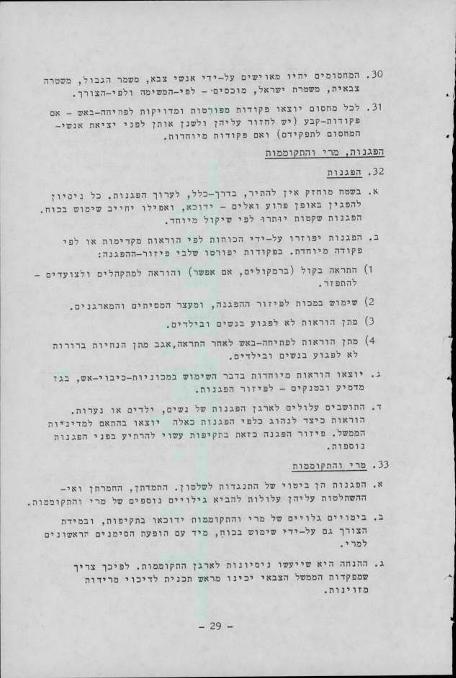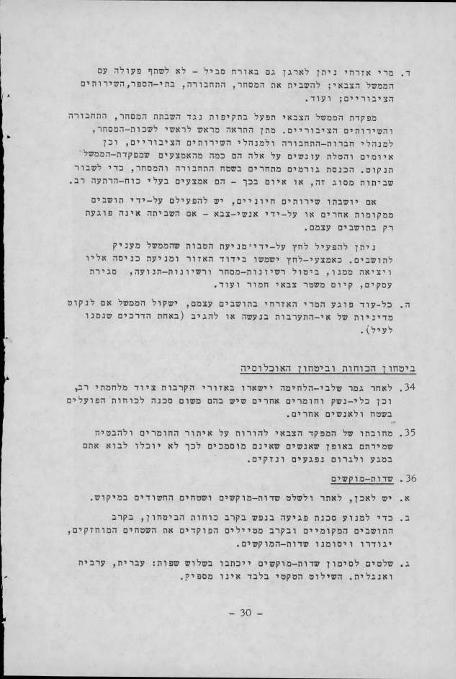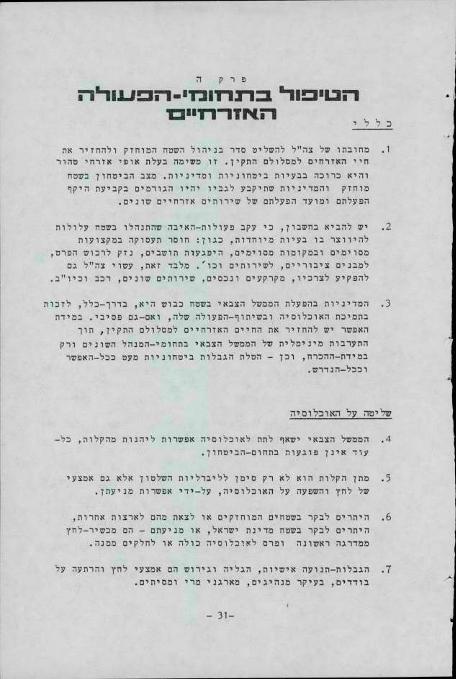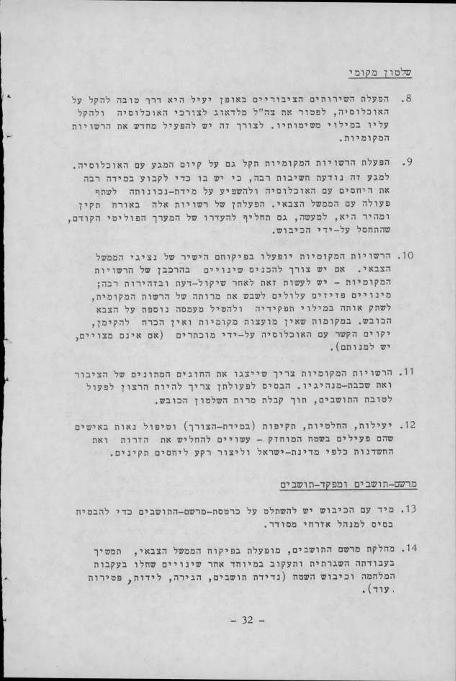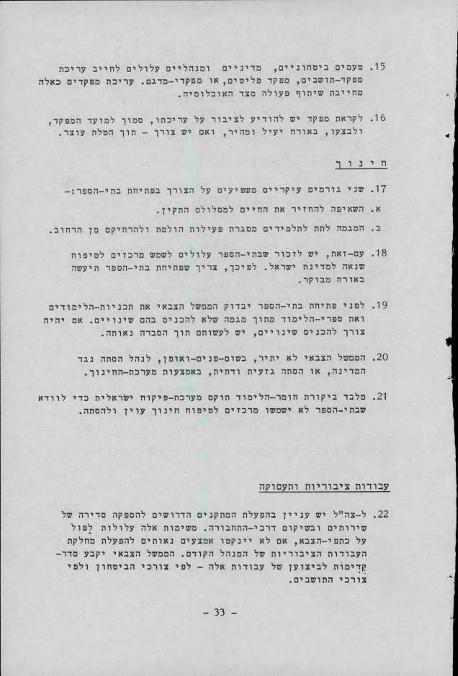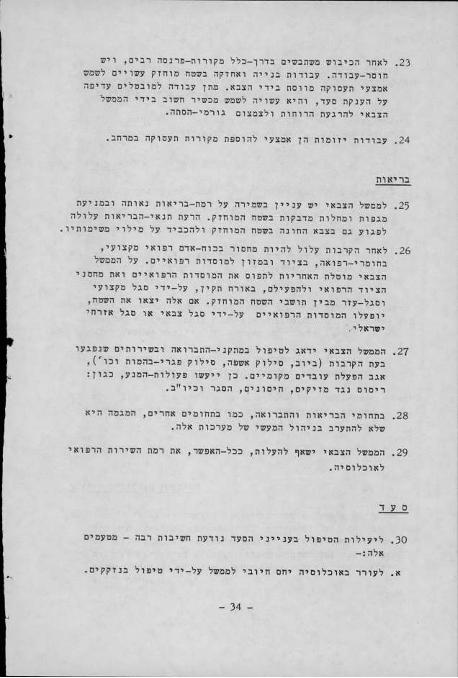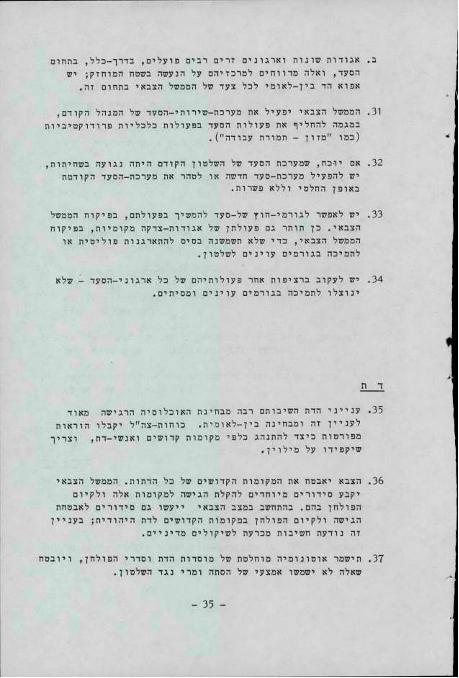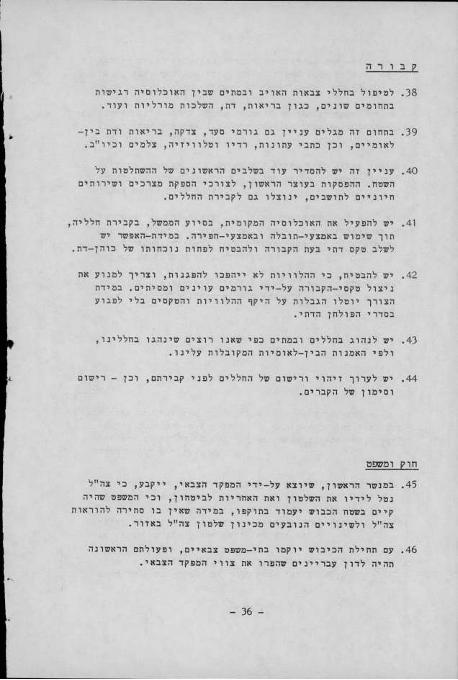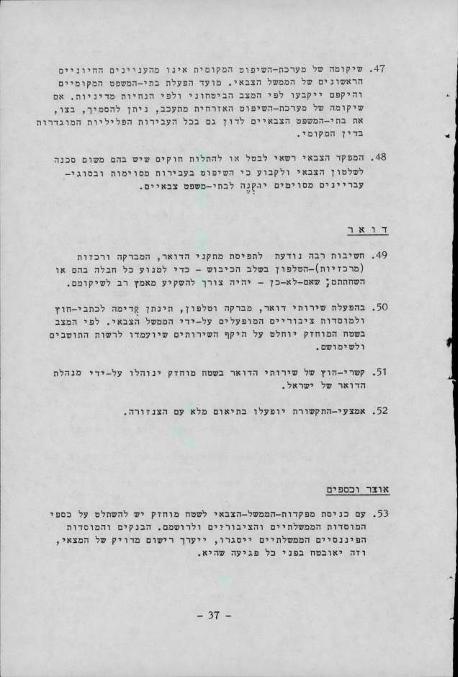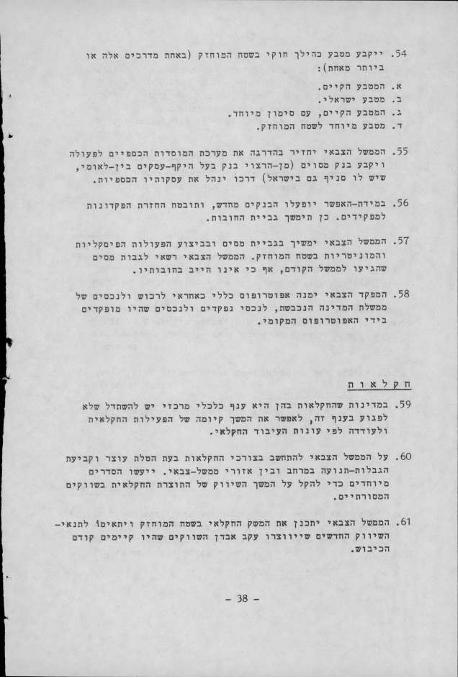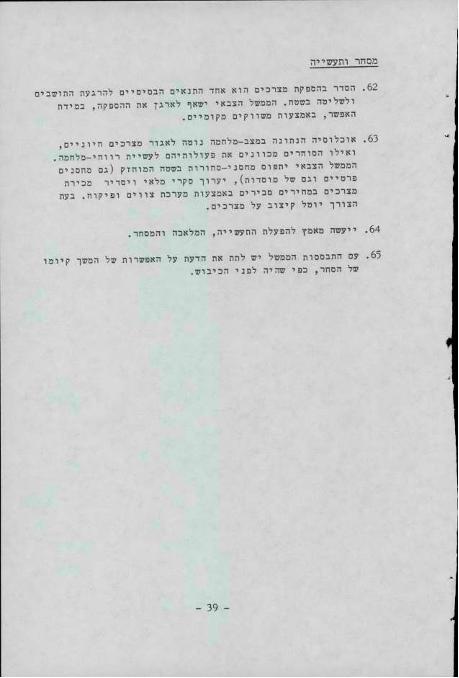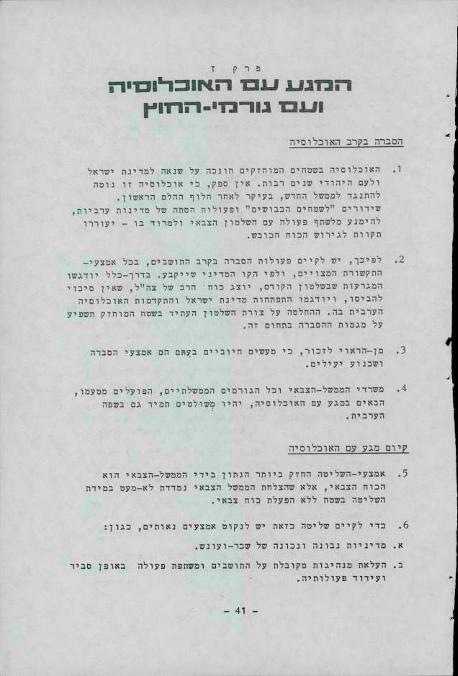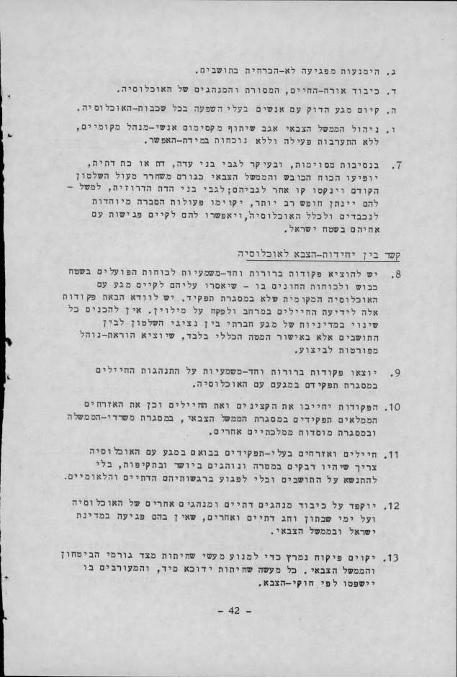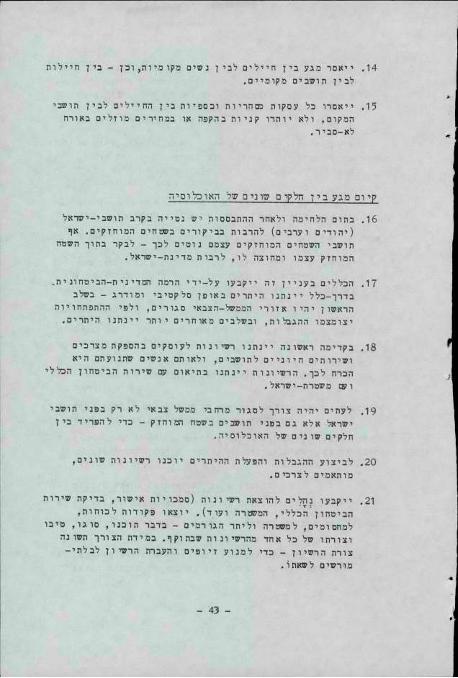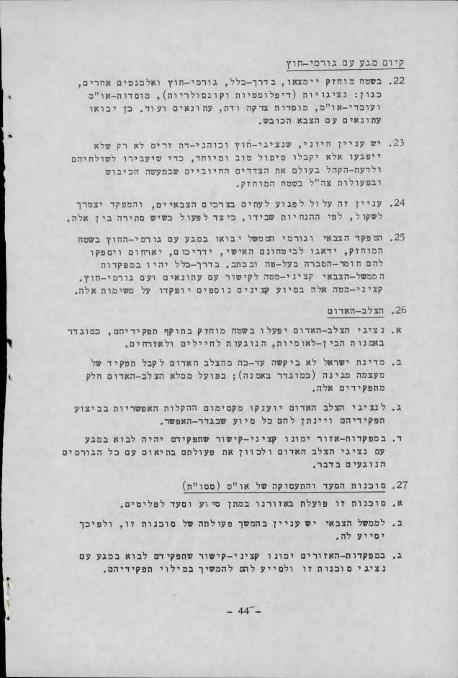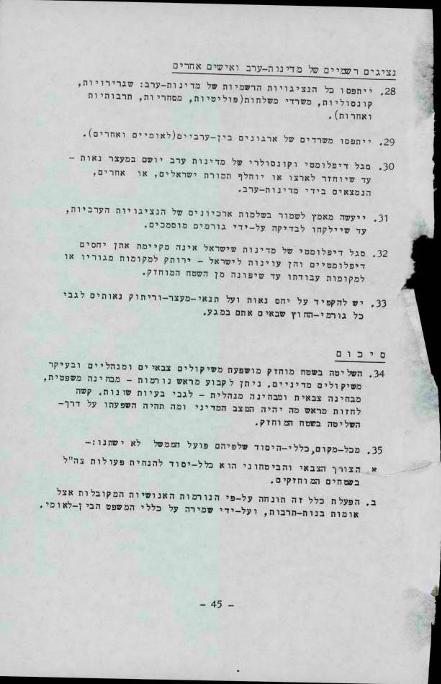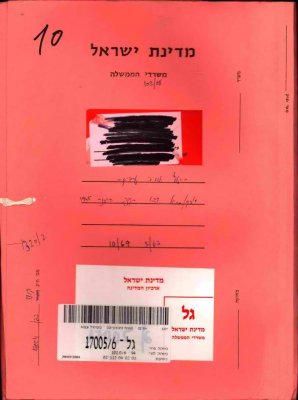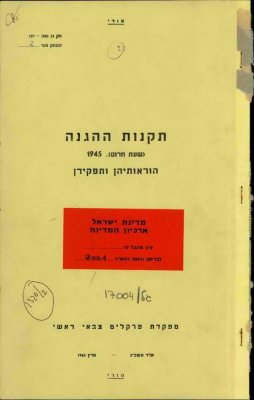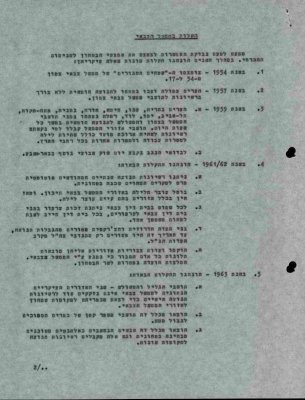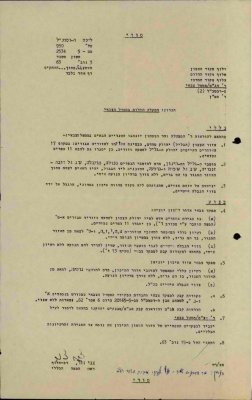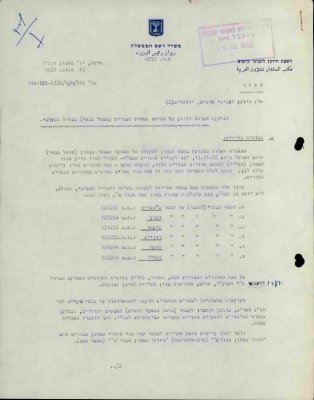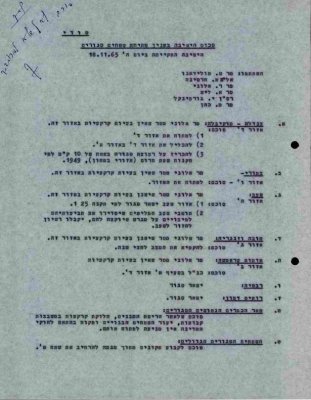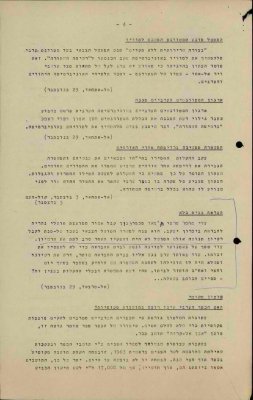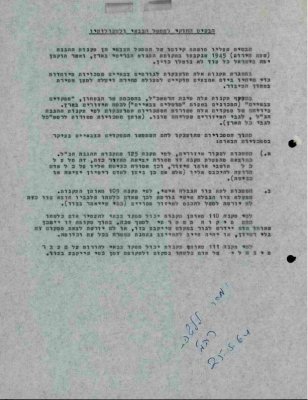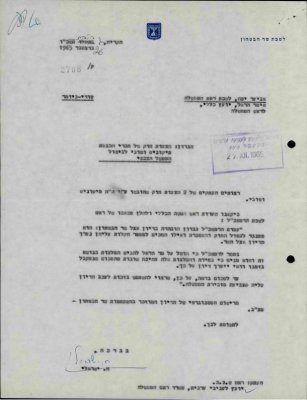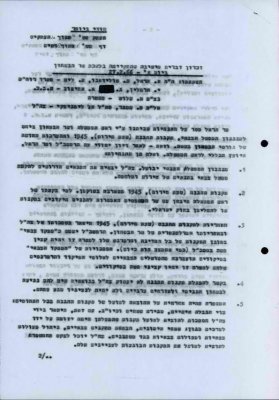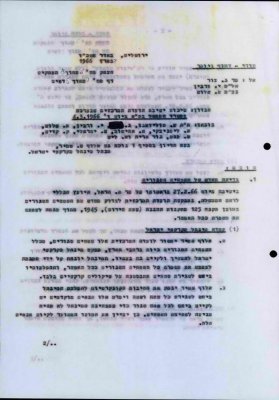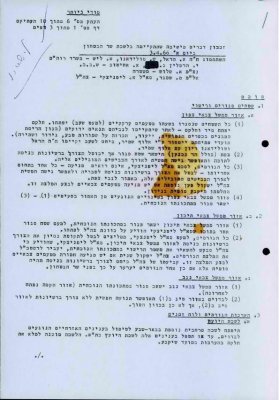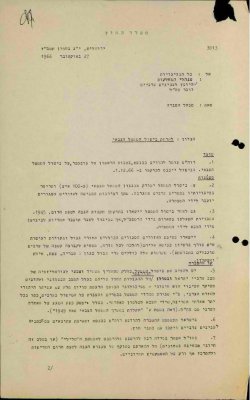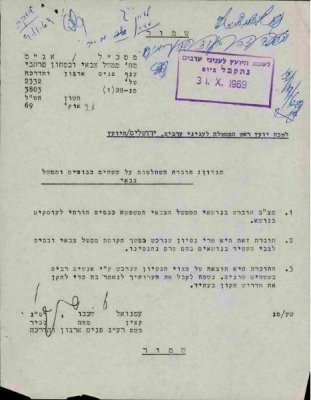Israel State Archives (ISA) File GL-17005/6 from the Office of the Arab Affairs Advisor at the Prime Minister’s Office (PMO) contains hundreds of pages that document some of the final chapter of the Military Government over Palestinian citizens of Israel, before it was formally replaced with civilian oversight mechanisms in December 1966. Akevot’s access to the 446-page file at the ISA was delayed for two years. We are now making it publicly available.
Israel State Archives (ISA) File GL-17005/6 from the Office of the Arab Affairs Advisor at the Prime Minister’s Office (PMO) contains hundreds of pages that document some of the final chapter of the Military Government over Palestinian citizens of Israel, before it was formally replaced with civilian oversight mechanisms in December 1966. Many of the documents in this file (titled: Operations Division/Military Government: Emergency (defense) Regulations 1945) address the changes made in how Military Government powers were exercised, and mostly, the gradual lifting of travel restrictions the Military Government imposed on Arabs in the three areas where it operated: The North, the Central Area and the Negev. The later documents in the file related to the planned cancellation of the Military Government and the transfer of its powers, as per Prime Minister Levy Eshkol’s undertaking from January 1966.
Akevot’s access to the 446-page file at the ISA was delayed for two years, initially, on the false claim that the majority of the records in the file are General Security Service (GSS) materials (“if we take GSS documents from the file only the cover will be left” an ISA staffer told Akevot), then on the vague claim that the file was classified since it related to “matters of security” – a reasoning that cannot in itself justify a denial of access request. The main portion of the file was finally declassified and opened for access, and a copy was provided to Akevot Institute only after we filed an appeal with former Chief State Archivist Dr. Yaakov Lozowick, based on the provisions of the Archive Law and Access Regulations. Even today, more than a year after most of the file was opened for public access and digitized by the ISA, it has yet to be uploaded to the ISA website. Akevot Institute is now making it available to download here.
When the State of Israel was founded, a Military Government was installed as a system for handling the Arab population that had remained in the parts of the country that were conquered but had not been designated as part of the Jewish state according to the 1947 Partition Plan. The Military Government’s objectives were to ensure a) Control over areas inhabited by Arabs; b) Control over land and villages depopulated during the war; c) Monitoring the movements and activities of the Arabs; d) Preventing refugees from returning to areas captured during the war.
The Military Government initially covered the Galilee, the Negev Desert and the cities of Ramle, Lod, Majdal (Ashkelon) and Jaffa, and, following the armistice with Jordan (April 1949), the Triangle area. Shortly after the war ended the Military Government in the mixed Jewish-Arab cities was abolished, leaving about 85% of Arabs living in Israel under Military Government rule in three districts: North, Centre (the Triangle and Wadi ‘Ara) and Negev. Sixty percent of the Arabs lived in the Galilee, 20% in the Triangle and the rest in the Negev and the mixed cities. From 1948 until its abolition in 1966, the Military Government was the main operative arm dealing with the Arab public, and as such, setting the course for Jewish/Arab relations in the country.
The source for the Military Government’s powers was the Defence (Emergency) Regulations 1945 – which had been used by the British during their mandate over the country and adopted by the Temporary State Council in 1948. The Regulations and their provisions were both the source for the Military Government’s powers, and the main tool it used in its operations.
So, for instance, Regulation 125, which played a key role in the Military Government, stipulates the Military Commander (commonly known as the Military Governor), may declare a certain area or locality as a closed zone and require anyone entering or leaving it to obtain a written permit. It was used to split certain areas within the country into closed zones, referred to as “Military Government Zones”. The Negev, the Galilee, Wadi ‘Ara and the Triangle were internally divided into different zones and residents required permits in order to travel between them, as well as to other parts of the country. The boundaries of these zones were periodically altered, and these changes were presented as “easing the Military Government” for the benefit of the residents.
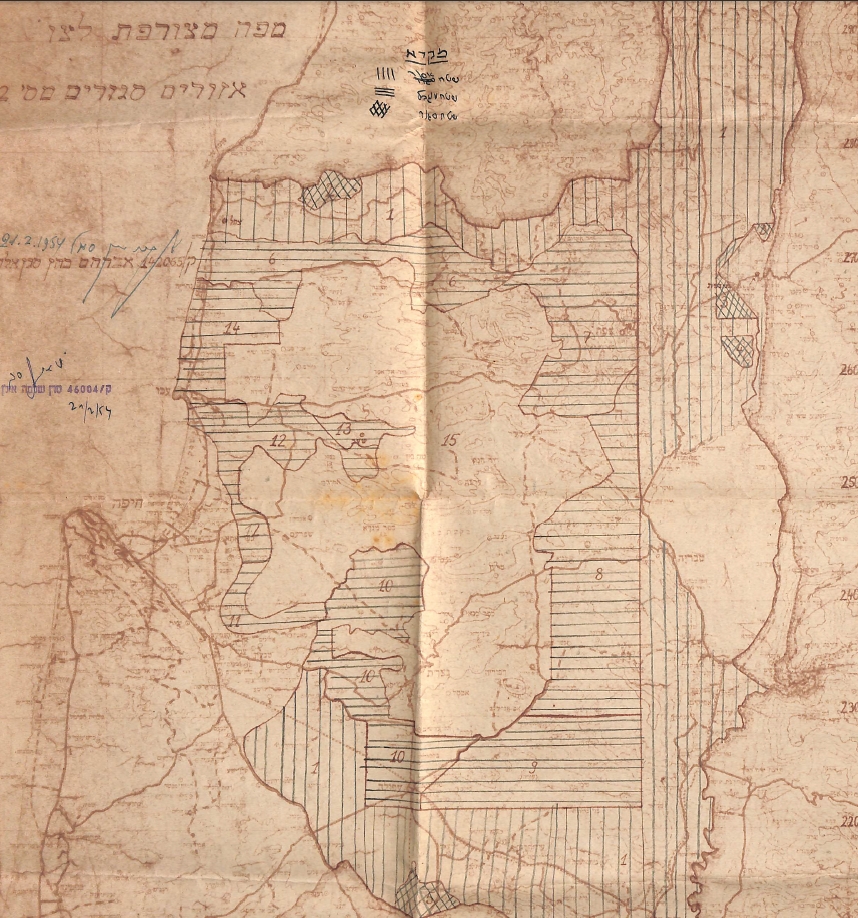
The division into “closed zones under Regulation 125 served as a basis for control measures over the population. So, for instance, Regulation 109 empowered the Governor (referred to as the Military Commander in the Regulation) to issue personal “restriction orders” that would prevent their subjects from living in or accessing a certain zone. Regulation 110 provides, among other things, that the Governor may exile a person from his place of residence and place them under police supervision for up to one year (orders issued pursuant to this regulation were referred to as “exile orders”).
The military used other regulations that provide for draconian supervision and punitive measures. Regulation 111 empowered the Military Governor to place a person in administrative detention, with no trial or a formal right to appeal. Regulation 112 empowered the Minister of Defense to deport persons from Israel, including citizens.
The records in this file shed light on the policy considerations that guided the Military Government and the reasons for some of the common methods of practice it used. The many discussions around travel restrictions and frequent changes made to them attest to how central they were to controlling the population. They also provide historic documentation of the restrictions themselves – their changing boundaries, the stricter measures taken against Negev Bedouin compared to other subjects living under the Military Government, as well as samples of orders and travel permits.
While declaratively, the Military Government was designed to maintain national security based on the Defence (Emergency) Regulations, the records contained in File GL-17005/6 offer a more accurate picture of its goals and activities in controlling Israel’s Palestinian population, its political activities and land resources, as well as the Military Government’s ultimate replacement by civilian bodies to continue this work. While oversight and control of Israel’s Arab citizens passed to civilian hands after the abolition of the Military Government, these bodies – the Arab Affairs Advisor at the PMO, the Israel Police, the GSS, and the Israel Land Administration – continued to rely on the Defence (Emergency) Regulations as the legal framework for their own supervision mechanisms. In other words, the policy that formed the core of the Military Government persisted, though the importance of its abolition as the control mechanism should not be downplayed. Statements made by the Arab Affairs Advisor at the PMO seem to support this observation, as indicated in Document No. 7. Advisor Shmuel Toledano explains that the change was mainly “psychological”, with the powers of the Military Government having been transferred to civilian bodies whose operations were expanded (as shown in Document No. 9).
A main feature in the routine discussions around the travel regime was the issue of access to depopulated Palestinian villages. These villages had been declared special closed zones, sometimes as enclaves within a larger area to which access was permitted. The guiding considerations on this issue were referred to as “land considerations”, and they revolved around two main issues: the likelihood that refugees from these depopulated villages would return to them should they become accessible and the status of the land in these villages from the state’s standpoint.
Different documents within the file reveal a list of measures Israel used to control the land of depopulated villages: Forestation (mostly of built-up areas that had not been destroyed yet); leasing for cultivation to Jewish farming communities; transfer as compensation to other “absentees”; compensation in return for removal of ownership claims; enforcement vis-à-vis construction without permits; demolition of remaining structures; expansion of IDF training grounds and the establishment of military camps and facilities; “populating and developing the Galilee” via industry and farming; declaring nature reserves and posting guards over them (see Documents 4, 5, 11).
The file also contains two lengthy documents that present the IDF’s official doctrine regarding two matters that lie at the heart of all these issues: one is a manual named “The Defence (Emergency) Regulations 1945 – Provisions and Functions”, internally published by the Military Advocate General Corps in March 1963. The first section of the manual contains an overview of the provisions in the Regulations that formed the basis for the Military Government rule over Arab citizens. The second section lists the practical objectives for which the Regulations were invoked.
Another document in the file was prepared after the Military Government in Israel ended and two years after the Military Government in the territories occupied by Israel in 1967 was established. This is a military manual, entitled Seizure of Occupied Territory and Military Governance, an IDF General Staff binding doctrinal document. The manual was used to guide the actions of military powers in exercising control over the occupied territories, based on the experience gained through the Military Government inside the country and lessons learned during the first two years of the Military Government in the territories.

